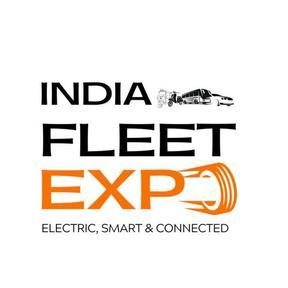
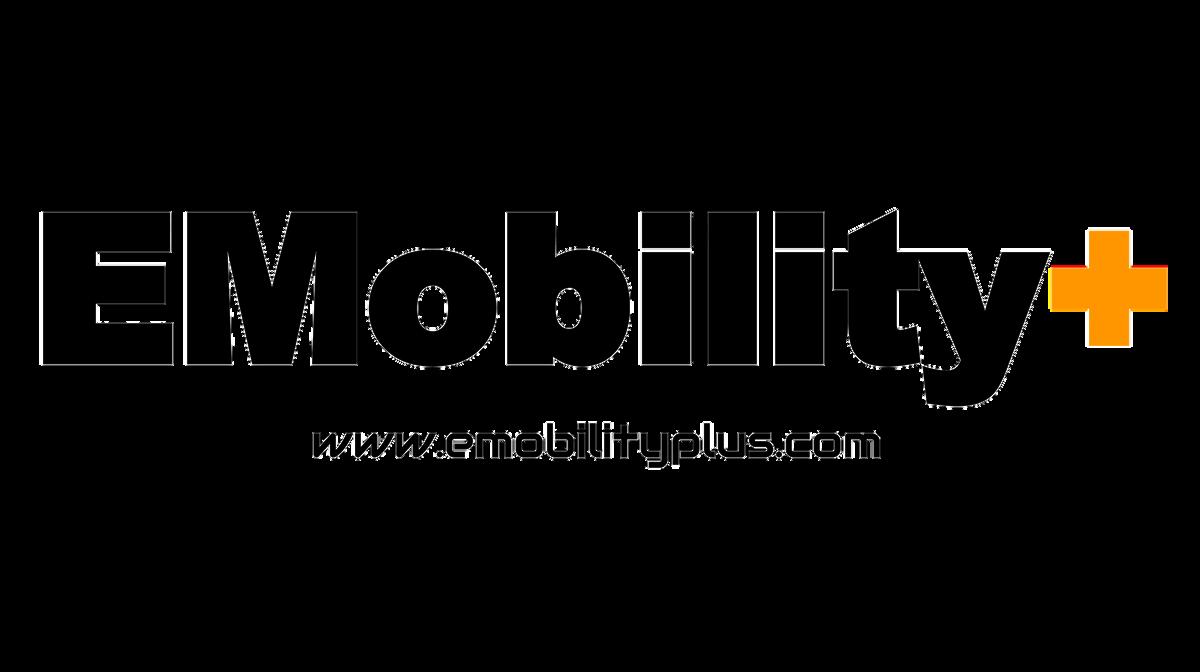








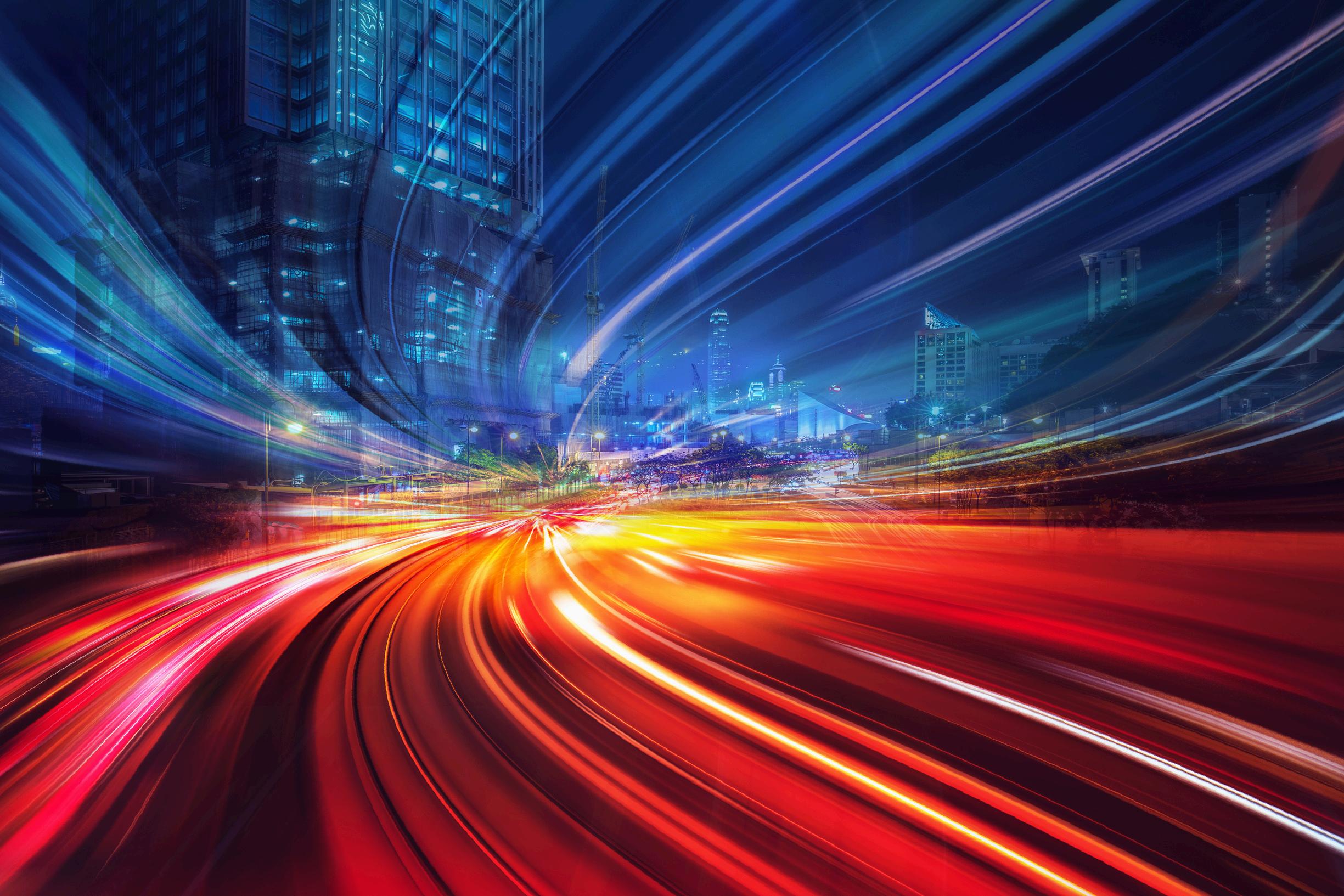

















l f investors The funding will be utilized to scale TruEV Score™, India’s first AI-driven EV health metric, and position it as the industry benchmark for resale and financing
Enigma Automobiles Secures ₹6.5 Crore SBI Credit Boost to Accelerate EV Expansion
Enigma Automobiles has secured a ₹6 5 crore credit facility from the State Bank of India (SBI) to strengthen its production capabilities and fuel nationwide expansion
The working capital support structured as a term loan and an LC line of credit will enable Enigma to ramp up manufacturing to meet surging demand and expand into Tier-1 markets such as Bengaluru, Delhi, and Hyderabad, where electric vehicle adoption is gaining rapid traction

iGoWise Mobility Secures ₹8.2 Cr Funding to Launch India’s First Smart Electric Trike
iGoWise Mobility (iGo) has raised ₹8 2 crore in cumulative funding from ISB Angels, 888VC, and a recent bridge round led by Guptaji VC. The company’s first product, the BeiGo Rugged Utility Vehicle, is set for market launch in a record 32 months. The startup’s trikes feature a patented anti-topple swiveling mechanism and on-demand selfbalancing system, making them five times more costeffective, three times more energy-efficient, and twice as compact as global peers.
m
Finvolve Fuels Battwheelz’s Expansion with ₹2 Cr Investment in EVDriven Last-Mile Logistics e ut s o accelerate the growth of electric mobility in India Under the Memorandum of Understanding (MoU), SBI will extend inventory financing on favorable terms, offering dealers attractive interest rates, flexible repayment options, and tailored credit solutions The tie-up will also enable VinFast to tap into SBI’s extensive branch network and digital platforms, helping the brand expand across both urban and emerging markets.
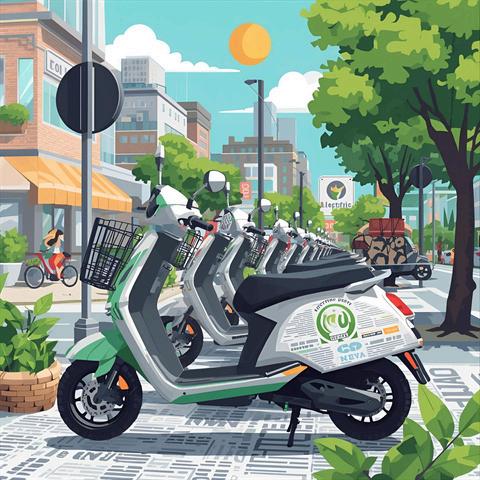
Finvolve has announced a strategic investment of ₹2 crore in Battwheelz, India’s fastest-growing Electric Mobility as a Service (EMAAS) provider focused on sustainable last-mile delivery The seed funding round, raised at a valuation of ₹60 crore, also saw participation from several marquee angel investors. The freshly infused capital will be utilized to expand Battwheelz’s geographical footprint in Bengaluru and strengthen its electric fleet operations in Chennai and Pune, further consolidating its presence in the southern logistics market.

“INDIA’S
PIVOTAL PHASE
Bijliride Invests ₹2.1 Crore to Accelerate EV Fleet Growth, Eyes Nationwide Expansion

EV rental and mobility-tech startup Bijliride has invested ₹2.1 crore over the past six months, channeling funds into fleet growth, technology upgrades, and team expansion. The capital was raised in January 2025 from High NetWorth Individual (HNI) investors, valuing the company at ₹21 crore (post-money). The funding has already begun to show results, with Bijliride reporting stronger services, improved customer experience, and a solid foundation for sustainable growth.
Cabs Raises $2.5 Million from IPV to Accelerate EV Ride-Hailing
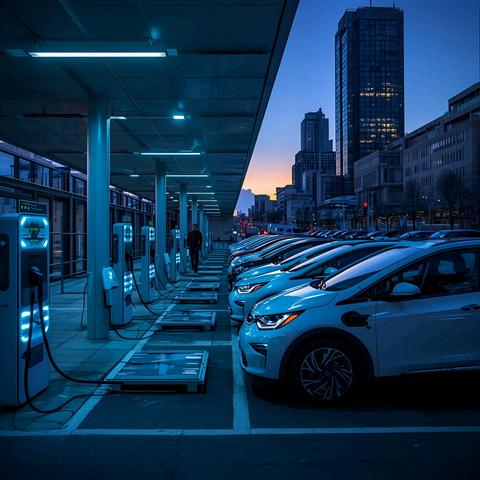
SnapE Cabs, India’s fast-growing electric ride-hailing startup, has secured $2.5 million in a Bridge Deck round led by Inflection Point Ventures (IPV), one of the country’s largest angel investment platforms. The round also saw participation from Ah Ventures, Shish Kharesiya, Praveen Chand, Jaspreet Kaur, and others. The funds will be utilized for operational overheads, leasing EV cars, and product development
Ministry Of Road Transport And Highways Releases New Guidelines 2025To Streamline And Secure India’s Shared Mobility Sector
JBM ECOLIFE Mobility Pvt. Ltd., a JBM Auto Ltd. company, has secured a $100 million (INR equivalent) long-term capital investment from the International Finance Corporation (IFC), a member of the World Bank Group The funding will support the deployment of state-of-the-art, airconditioned electric buses across Maharashtra, Assam, and Gujarat, strengthening India’s public transport backbone
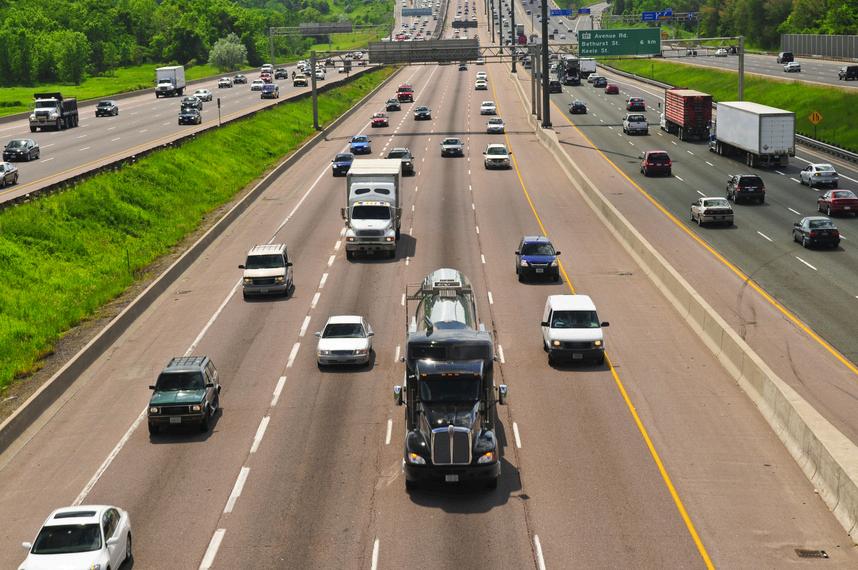
India
Up with Axis Bank to Drive EV Financing Push Ahead of
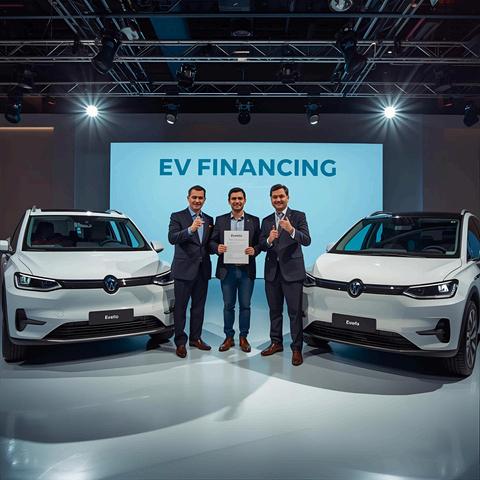
In a major step to strengthen its India debut, VinFast Auto India has signed a Memorandum of Understanding (MoU) with Axis Bank to provide comprehensive EV financing solutions for dealers and retail buyers. Under the agreement, Axis Bank will extend up to ₹200 crore in dealer financing, while customers will benefit from attractive interest rates, flexible repayment options, 100% on-road funding, exclusive offers, and priority banking services Dedicated Axis Bank representatives will also be stationed at VinFast showrooms to ensure seamless support
Cabinet Approves ₹1,500 Crore Scheme To Boost Critical Mineral Recycling And Supply Chain Resilience
The Union Cabinet has approved a ₹1,500 crore incentive scheme to boost critical mineral recycling under the National Critical Mineral Mission. Aimed at extracting essential minerals from e-waste and battery scrap, the six-year scheme (2025–31) offers Capex and Opex subsidies to promote new and expanded recycling units. Large companies can receive up to ₹50 crore in incentives, while small firms and start-ups can get up to ₹25 crore, with one-third of the outlay reserved for them. The initiative targets 270 kilotons of annual recycling capacity, ₹8,000 crore in investments, and about 70,000 jobs, enhancing India’s mineral self-reliance and clean energy goals
Ministry Of Heavy Industries Launches PM E-DRIVE Scheme With ₹2,000 Crore Boost For EV Charging Infrastructure Across India
The Ministry of Heavy Industries has issued operational guidelines for the PM E-DRIVE scheme to expand India’s EV charging network. With an outlay of ₹10,900 crore, including ₹2,000 crore for public charging, the scheme targets cities, highways, and smart urban zones Eligible government and public agencies will set up chargers for all vehicle types, adhering to Ministry of Power standards. Subsidies up to 100% for government premises and 80% for other sites will apply BHEL will serve as the Project Implementation Agency, and IFCI as the management body The initiative aims to build reliable, nationwide EV infrastructure and accelerate electric mobility adoption


EV Battery Market Set to Surge Tenfold, Hitting USD 661.98 Billion by 2034
The global EV battery market is set to surge from USD 66.69 billion in 2025 to USD 661.98 billion by 2034, growing at a CAGR of 28 72%, driven by rising EV demand, urbanization, and government incentives. Lithium-ion batteries dominate, while LFP batteries gain traction for cost and safety. BEVs lead the segment, with HEVs growing rapidly Costs are falling, boosting affordability. Major players like CATL, LG Chem, BYD, and Panasonic dominate Advancements in solid-state batteries, AI battery management, and renewable integration will further accelerate market growth

India’s EV sector is rapidly growing, with 105 7 million units of electricity consumed in June 2025, up 4 88% from April Maharashtra, Karnataka, and Delhi led usage, while top utilities supplied over 78% of EV power Rising adoption in Gujarat, Telangana, and other states, supported by GST at 5% and expanding charging infrastructure, highlights the sector’s momentum Continued investment and policies will drive cleaner,
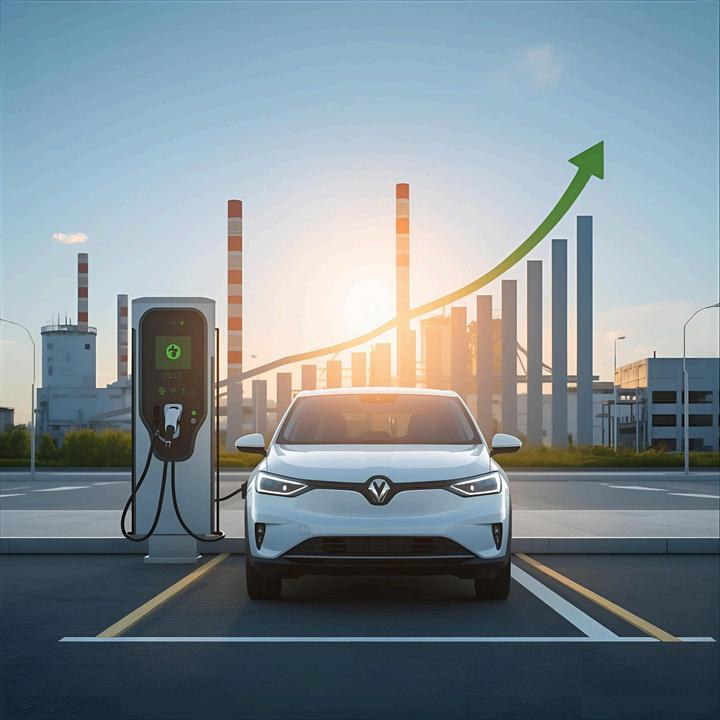
India’s Electric Two-Wheeler Sales Rise Steadily In September 2025, Boosted By Government Support, Innovation, And Growing Consumer Demand
India’s electric two-wheeler market grew steadily in September 2025, with 1,04,1 units sold. TVS Motor led with a 21.6% sha followed by Bajaj Auto, Ather Energy, O Electric, and Hero Motocorp, collectiv holding 83% of sales Smaller players l Greaves Electric and BGauss are expandi affordable EV options Government supp through FAME, GST reduction, and lo battery production, along with innovati and rising consumer interest, is drivi growth. Despite global challenges, t sector shows strong potential sustainable, long-term expansion.

India’s EV Growth Hinges On Accessible Home Charging And Strong Governance Framework – White Paper
The growth of EVs in India depends heavily on accessible home charging, pa within Residential Welfare Ass (RWAs) in dense urban areas. whitepaper highlights that, unlik India’s regulatory framework is still the implementation level It reco forming state-level apex commi monitor enforcement and grievance cells, while empowerin Local Bodies (ULBs) to levy fines compliant RWAs Ensuring every r ‘Right to Charge’ through clear reg effective monitoring, and account critical. This multi-level go approach aims to make home reliable, enforceable, and key to In adoption and sustainable mobility

Accelerating Electric Mobility: An In-Depth Analysis of Global EV Adoption, Market Dynamics, and Infrastructure Readiness through 2030
The IEA’s Global EV Outlook 2025 highlights rapid global EV adoption, with 17 million electric cars sold in 2024, led by China, Europe, and emerging markets in Asia, Latin America, and Africa Declining battery costs and competitive pricing improved affordability despite reduced subsidies. China produces over 70% of EVs, while Europe and the Asia-Pacific expand manufacturing Charging infrastructure remains insufficient, especially in the US and UK. Heavy-duty EVs are gaining cost parity, particularly in China By 2030, EVs may account for 40% of global sales, reducing oil demand and advancing energy security, climate goals, and sustainable mobility worldwide

Maruti Suzuki India Partners with HSBC India for Dealer Inventory Funding
Maruti Suzuki India Limited (MSIL) has entered a strategic partnership with HSBC India to provide inventory funding solutions for its extensive dealer network The Memorandum of Understanding (MoU) signed aims to support over 4,000 Maruti Suzuki sales outlets across India with enhanced inventory funding options to meet their working capital needs
Simple Energy Partners with Amazon and Flipkart to Offer Doorstep Delivery of Electric Scooters This Festive Season
Bengaluru-based electric vehicle manufacturer Simple Energy has announced strategic partnerships with Amazon India and Flipkart, enabling customers to browse, book, and receive doorstep delivery of its flagship electric scooters the Simple One Gen 1 5 and Simple OneS directly through the two leading ecommerce platforms.

ETO Motors, APCRDA Partner to Launch Women-Driven Electric Fleet in Amaravati
In a major step toward sustainable urban mobility and women empowerment, Hyderabadbased electric mobility firm ETO Motors signed a Memorandum of Understanding (MoU) with the Andhra Pradesh Capital Region Development Authority (APCRDA) to deploy a fleet of electric three-wheelers operated entirely by women drivers in the Amaravati Capital Region

Legacy EV and SmarterHelp Partner to Launch Comprehensive Training Program for EV and Charging Technicians
Legacy EV, a leader in electric vehicle (EV) education and conversion technology, has partnered with SmarterHelp, an independent workforce development company spun out from ChargerHelp!, to launch a comprehensive joint training program that prepares technicians to work across the entire EV ecosystem from vehicles to charging infrastructure.
Greaves Electric Mobility Partners with Shriram Green Finance to Boost EV Accessibility in India

Greaves Electric Mobility Pvt Ltd (GEML) has announced a strategic partnership with Shriram Green Finance the dedicated EV financing arm of Shriram Finance to make electric mobility more accessible across the country Under this collaboration, customers will be able to avail convenient and flexible retail financing options for GEML’s range of electric threewheelers under the Greaves 3W brand and its electric light commercial vehicles (ELE)
Tata Capital, Jupiter Electric Mobility Join Forces to Power India’s e-LCV Revolution
In a move set to accelerate the adoption of electric commercial vehicles in India, Tata Capital Limited, the flagship financial services arm of the Tata Group, has signed a Memorandum of Understanding (MoU) with Jupiter Electric Mobility (JEM), a subsidiary of Jupiter Wagons Limited, to offer financing solutions for JEM’s range of electric light commercial vehicles (e-LCVs)


Bijliride Partners with DeCharge and Bolt.Earth to Build Hyderabad’s Largest Connected EV Charging Network
Bijliride, a fast-growing EV rental and mobilitytech startup, has announced a strategic partnership with DeCharge and Bolt Earth to integrate its extensive charging networks directly into the Bijliride mobile app The move aims to deliver a seamless, connected, and userfriendly electric mobility experience for riders across the city
Toyota Kirloskar Motor Partners With Karnataka Government To Boost Vocational Education In Schools
Toyota Kirloskar Motor (TKM) has signed an MoU with Samagra Shikshana Karnataka (Department of School Education and Literacy), Government of Karnataka, to promote and strengthen vocational education for students of Grades 9 to 12 The collaboration aims to bridge the gap between academia and industry by providing hands-on learning in automobile technology and nurturing students into responsible, future-ready citizens

Indofast Energy Partners With E-Sprinto To Deploy 20,000 Electric Two-Wheelers By 2026, Powering India’s EV Revolution
Indofast Energy, the country’s leading batteryswapping solutions provider, has announced a strategic partnership with electric two-wheeler manufacturer e-Sprinto to deploy 20,000 electric twowheelers across India by 2026 The collaboration aims to accelerate the adoption of EVs in last-mile delivery, reduce carbon emissions, and empower India’s gig economy with clean, efficient, and costeffective mobility solutions
Zypp Electric And Shell Foundation Partner To Drive Women-Led EV Growth In Tier-2 India
Zypp Electric has partnered with the UK-based Shell Foundation to accelerate electric vehicle adoption in Tier-2 cities and empower women in the last-mile delivery ecosystem The collaboration aims to strengthen Zypp’s mission to decarbonize last-mile logistics while creating livelihood opportunities through three key initiatives expanding EV rental solutions to smaller cities, scaling women-centric delivery programs, and enhancing the EV Training Academy to train riders, especially women, in EV operation and maintenance
Battery Smart And Lilypad Join Forces To Accelerate Electric Two-Wheeler Adoption In Delhi-NCR
Battery Smart, India’s largest battery-swapping network for electric two- and three-wheelers, has announced a partnership with Lilypad, the country’s newest digital marketplace for two-wheeler EVs The collaboration aims to make electric vehicle ownership more accessible, affordable, and convenient, accelerating the adoption of electric two-wheelers (E2Ws) across Delhi-NCR
Partners With Auto Sales India To Power Northeast’s Green Energy Revolution
GEON has announced a strategic partnership with Auto Sales India Ltd, one of Northeast India’s most trusted distributors with over 25 years of market leadership. The collaboration aims to expand GEON’s product portfolio across all eight Northeastern states, introducing advanced EV batteries and inverter battery solutions tailored for the region’s diverse energy needs. The inverter batteries will support both solar and grid-based systems, while the EV batteries are designed specifically for the electric three-wheeler segment a growing component of India’s sustainable mobility landscape

Kazam Partners With HPCL To Power India’s EV Future With 5,350 Integrated Public Chargers
Kazam has announced a strategic partnership with Hindustan Petroleum Corporation Limited (HPCL) to accelerate the expansion of public electric vehicle (EV) charging infrastructure across the country Under this collaboration, more than 5,350 HPCL EV chargers, including 3,043 DC fast chargers, have been integrated into the Kazam app via its OCPIpowered platform These chargers are strategically located along highways, in major cities, and at key HPCL retail outlets, providing EV users with real-time access to HPCL’s growing charging network
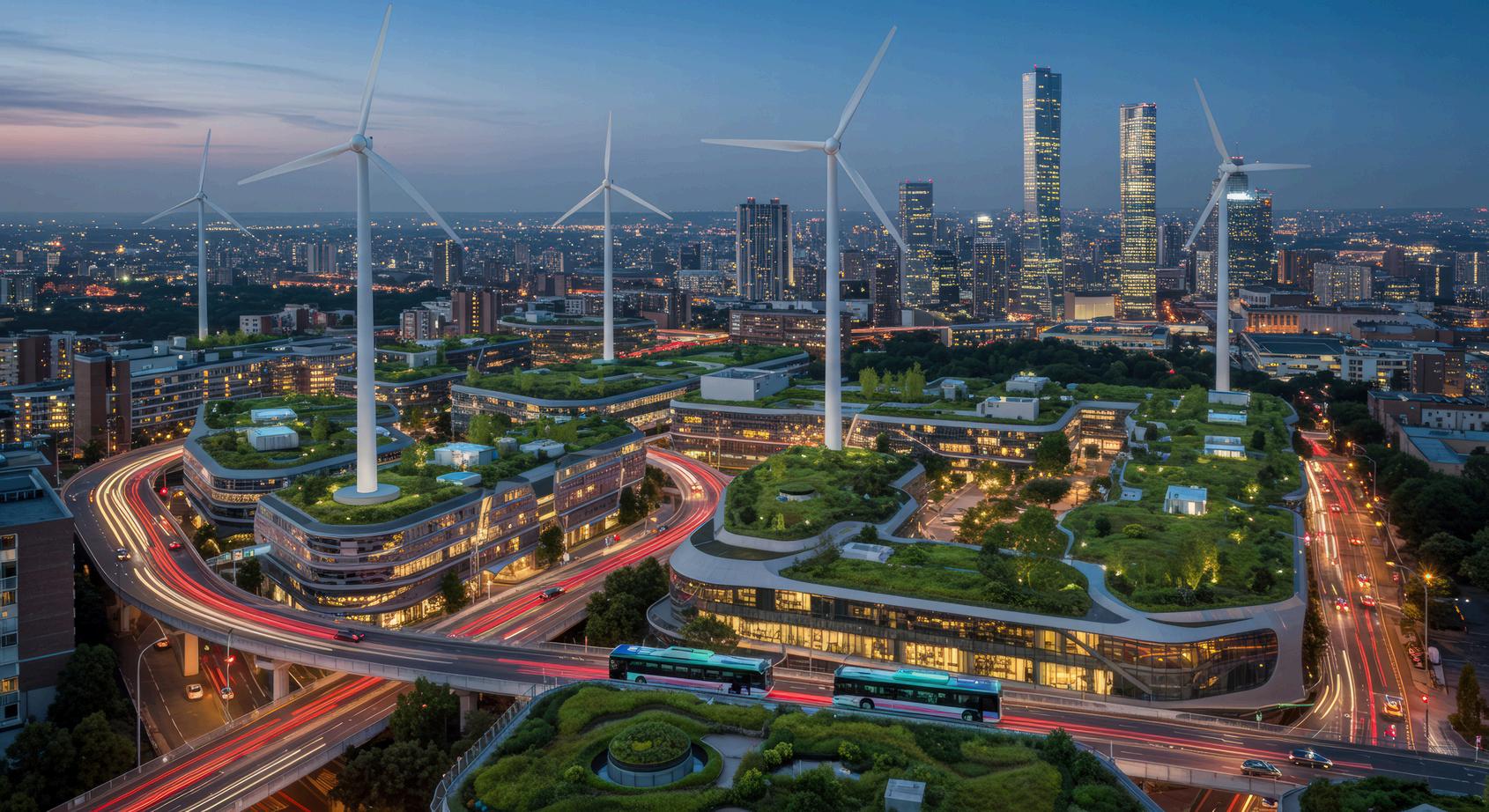
Tata Power EV Charging Solutions Teams Up With VE Commercial Vehicles To Boost EV Adoptio
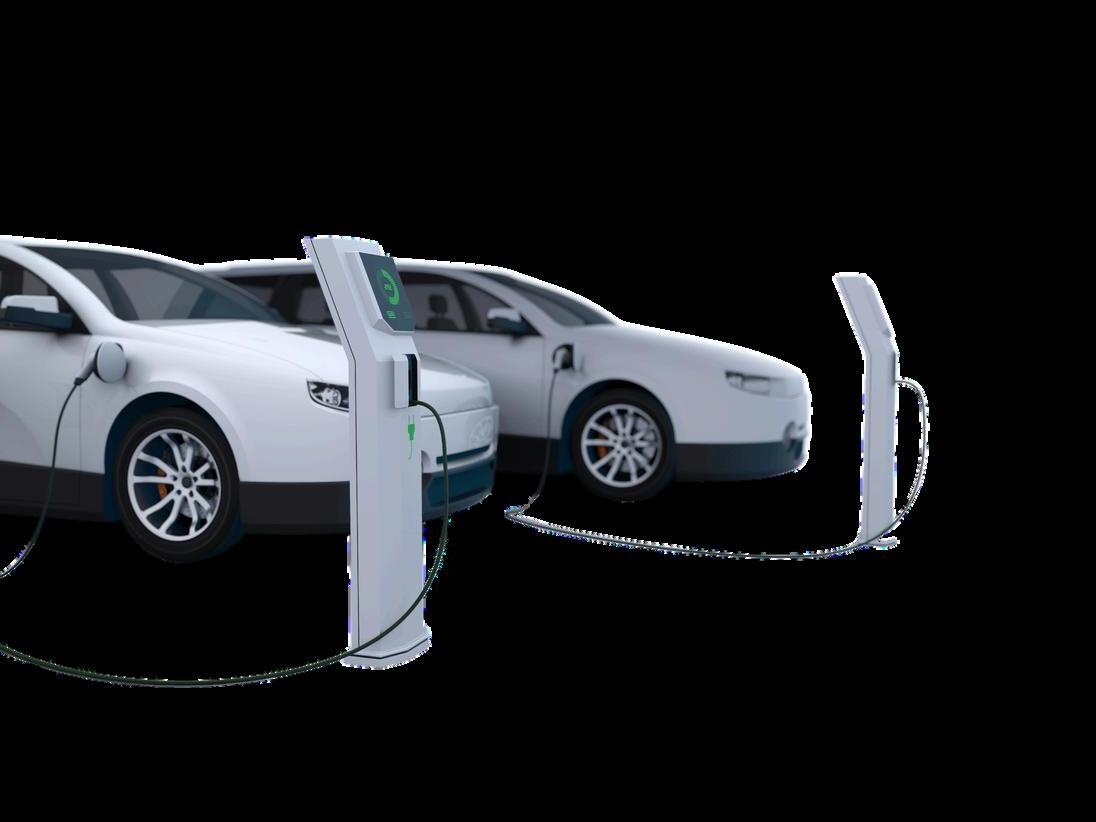
Tata Power EV Charging Solutions Limited (TPEVCSL) has announced a landmark collaboration to drive the adoption of electric commercial vehicles in India, beginning with the recently launched Eicher Pro X range of small commercial vehicles Through this MoU, Tata Power will leverage its extensive nationwide EZ Charge network and expertise in customized charging solutions, while VECV will contribute its deep experience in energy efficiency and commercial vehicle applications


Eicher Partners with Pickkup for 100 Pro X EV Small Trucks to Power Green Logistics
Eicher Trucks and Buses, a division of VE Commercial Vehicles (VECV), has announced a strategic partnership with Pickkup, a leading tech-enabled logistics provider, to deploy 100 Eicher Pro X EV small trucks across India The phased rollout will serve diverse sectors, including retail distribution, e-commerce, FMCG, courier, and perishable goods delivery Pickkup, which operates a 100% electric four-wheeler fleet under an asset-light model, caters to some of India’s largest e-commerce and logistics companies
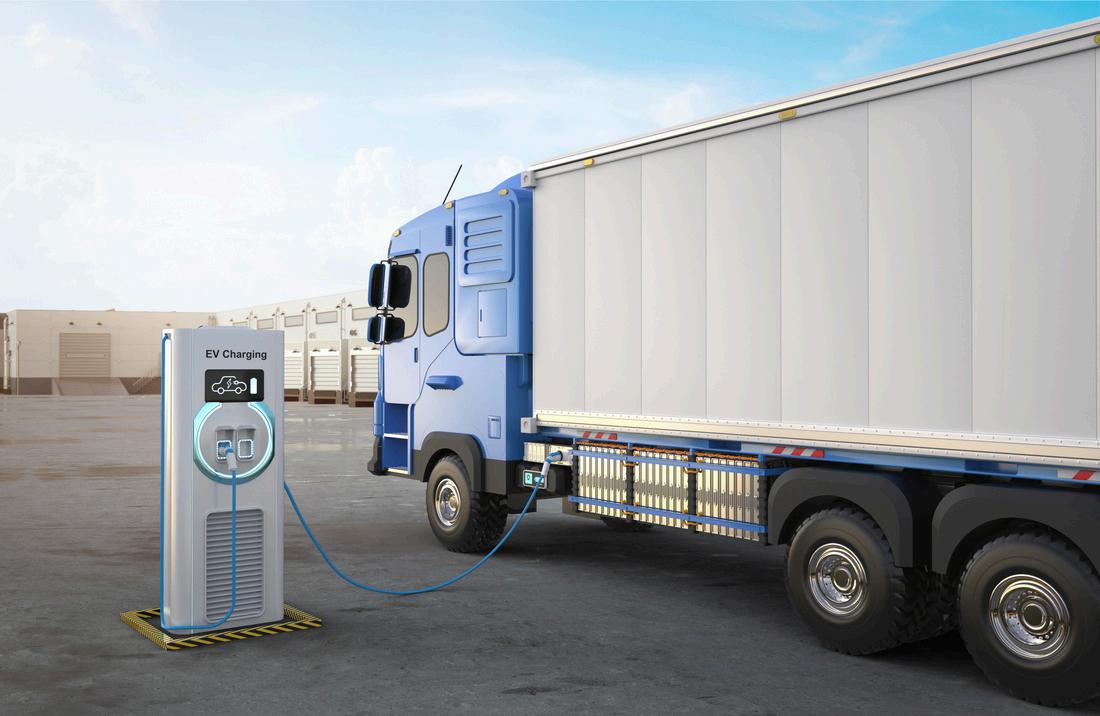
Relux Electric & TNGECL To Set Up 500 EV Charging Stations, Powering Tamil Nadu’s Green Mobility Drive
In a major push towards sustainable transportation, Relux Electric Private Limited, India’s leading EV charging infrastructure provider, has partnered with the Tamil Nadu Green Energy Corporation Limited (TNGECL) to establish 500 new EV charging stations across the state The move is expected to significantly accelerate Tamil Nadu’s journey towards becoming an electric mobility hub
Vinfast Partners With ICICI Bank To Boost EV Financing In India
VinFast Auto India, the Indian arm of Vietnamese EV maker VinFast, has signed a Memorandum of Understanding (MoU) with ICICI Bank to deliver comprehensive financing solutions for its customers and dealer network. The agreement will provide buyers of VinFast’s newly launched VF6 and VF7 models with a suite of tailored financing options, including 100% onroad funding, competitive interest rates, flexible repayment plans, and priority services
VECV And Jio-bp Pulse Join Forces To Expand EV Charging Network For Commercial Vehicles
VE Commercial Vehicles (VECV), a joint venture between the Volvo Group and Eicher Motors, has signed a landmark Memorandum of Understanding (MoU) with Jio-bp pulse, India’s leading public charge point operator, to strengthen charging infrastructure for electric commercial vehicles The collaboration will give Eicher Trucks and Buses’ EV customers access to over 6,000 Jio-bp charging points across highways, urban centers, and purpose-built EV hubs the largest DC fast-charging network in the country.
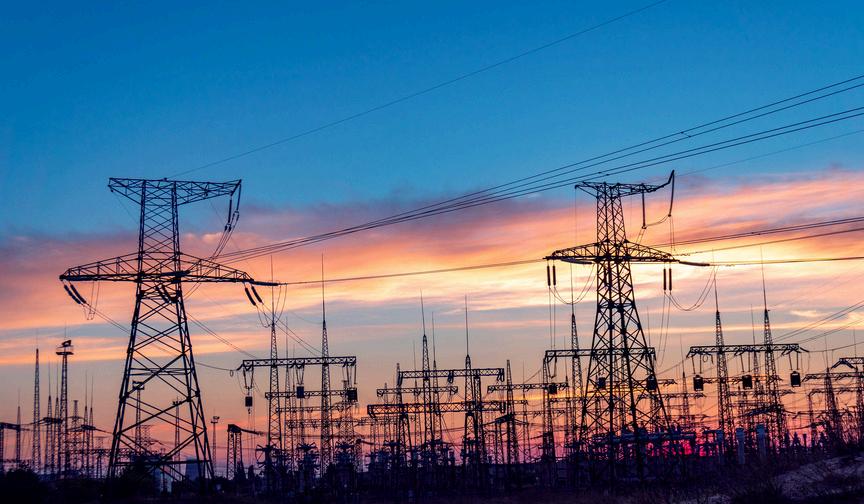
Chargezone Acquires Zerovolt’s Flagship Mumbai Hub, Strengthens Grip On Heavy EV Charging Market
ChargeZone, the country’s largest charge point operator (CPO), has acquired Zerovolt’s flagship Wadala charging facility in an all-cash deal The financial terms of the acquisition were not disclosed Founded just three years ago by Harshdeep Singh Virk and Priyesh Joshi, Zerovolt quickly emerged as a frontrunner in heavy commercial EV charging solutions The company gained prominence for powering Chalo Mobility, India’s first private electric intra-city bus operator, thereby spearheading sustainable public transport adoption

Citroën India Partners With Oriental Insurance To Raise The Bar For Motor Insurance For Customers
Citroën India announced a strategic partnership with Oriental Company, one of India’s lead sector insurers, to deliver seam customer-friendly motor solutions. The collaboration simplify the insurance journey f owners by offering quick policy best-in-class coverage, and fa settlements. The tie-up is ex enhance convenience, reduce p and ensure a hassle-free cash experience across the country



200 Electric Cargo Vehiclestory Funding
Euler Motors has signed an MoU with logistics platform Pickkup io to supply 200 electric four-wheeler cargo vehicles for intracity logistics and last-mile delivery operations The agreement marks the third phase of deliveries under the partnership Euler Motors has already delivered 25 vehicles, which are currently operational in Pickkup io’s fleet The new commitment will help Pickkup io expand capacity for existing clients and support upcoming partnerships

Suzuki Acquires RT.Works To Boost Electric Mobility And Personal Assistive Tech
Suzuki Motor Corporation has fully acquired RT Works Co , Ltd , making the Osaka-based life-support robotics company a wholly owned subsidiary The move is aimed at accelerating Suzuki’s capabilities in electric mobility and expanding solutions that support customers’ freedom of movement.
Bolt Earth, India’s largest EV charging network, has announced a strategic partnership with Zuperia Auto, the company behind the fast-growing Youdha three-wheeler brand, to strengthen home charging and earthing solutions for electric vehicles The two companies signed a Memorandum of Understanding (MoU) to collaborate on building innovative, safe, and efficient home charging infrastructure, with the aim of accelerating electric vehicle adoption across the country
TVS Motor Acquires Engines Engineering, Launches Global CoE in Italy to Power Next-Gen Mobility
TVS Motor Company has announced the acquisition of a 100% stake in Engines Engineering S p A , the renowned Italian automotive design and engineering firm known for its pioneering work in advanced prototyping, high-performance motorcycles, and MotoGP racing expertise The acquisition marks a significant step in TVS Motor’s strategy to strengthen its global design and engineering capabilities
LeafyBus, UP Govt in Talks to Expand Intercity Electric Bus Services
LeafyBus, a New Delhi-based electric intercity bus operator, is in talks with Uttar Pradesh Transport Minister Daya Shankar Singh to expand EV bus services across the state Discussions focus on boosting adoption and improving connectivity The UP government supports clean mobility through incentives, charging infrastructure, and policies aimed at reducing fuel dependence, cutting emissions, and promoting sustainable transport solutions
Tata Power and Tata Passenger Electric Mobility Launch Mumbai’s First Mega EV Charging Hub
Tata Power, in partnership with Tata Passenger Electric Mobility, launched Mumbai’s first large-scale TATA ev MegaCharger hub near Chhatrapati Shivaji Airport Featuring eight 120kW DC chargers and 16 bays, it serves private, taxi, and fleet EVs, enhancing fast, reliable charging This milestone strengthens India’s EV infrastructure, building on Tata Power’s 1,000+ existing green charging points across Mumbai
Tata Motors Crosses 25,000 Public Chargers, Signs MoUs for 25,000 More to Power EV Cargo Network
Tata Motors will provide 25,000 public chargers for electric small commercial vehicles (SCVs) across 150+ cities, partnering with 13 operators to add 25,000 more within a year Integrated with Fleet Edge, the network supports Ace EV, Ace Pro EV, and Ace EV 1000 models, ensuring range confidence, profitability, and zero-emission logistics, backed by 200+ dedicated EV service centers nationwide.





E-Mobility+ publications, distributed pan-India, sets a new standard in EMobiliy+ energy media. With over 200+ and a growing list of advertisers, we work with who's who in the industry across our platforms from print magazines to social media platforms put their brands first and ensure the best delivery of the marketing needs.

Customizable Product Layout Highest Circulation & Readership Well Researched Editorial Content Most
Ensures best delivery of the marketing needs Get




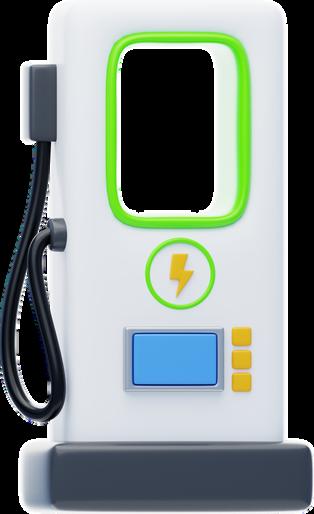


India’s automotive industry is undergoing a profound transformation, driven by the rapid adoption of digital technologies that are redefining how vehicles are designed, manufactured, sold, and driven Automotive digitization is no longer a futuristic concept it is now a central pillar in shaping the future of mobility From connected vehicles and data-driven manufacturing to intelligent supply chains and predictive maintenance, digitization is accelerating the shift toward smarter, safer, and more sustainable transportation solutions.

Digitalization is also transforming the after-sales ecosystem Predictive maintenance systems can now detect potential issues before they lead to breakdowns, ensuring better safety and lower operational costs Workshops and service centers are adopting digital service records, remote diagnostics, and augmented reality tools to improve repair accuracy and reduce downtime For customers, this means a more transparent, efficient, and personalized experience
The Indian automotive ecosystem, traditionally reliant on mechanical engineering and manual operations, is now embracing artificial intelligence (AI), the Internet of Things (IoT), cloud computing, and advanced analytics to enhance efficiency and performance Automakers are increasingly using digital twins to simulate vehicle performance, improve design accuracy, and reduce time-to-market Predictive analytics powered by machine learning is helping manufacturers forecast demand, optimize production lines, and minimize waste This data-centric approach is transforming traditional processes into agile, technology-driven operations, making the industry more resilient and adaptive to market fluctuations.
For consumers, digitization has redefined the driving experience The rise of connected cars equipped with real-time navigation, overthe-air software updates, voice assistants, and advanced telematics has blurred the line between vehicles and smart devices. Electric vehicles (EVs) are particularly at the forefront of this transformation, as digital integration is essential for battery management, energy optimization, and smart charging networks Automakers are partnering with technology companies to build platforms that seamlessly connect drivers, vehicles, and infrastructure laying the groundwork for future autonomous mobility
The government’s initiatives, such as the National Electric Mobility Mission Plan, the Production Linked Incentive (PLI) scheme for the auto and battery sectors, and policies promoting EV charging infrastructure, are providing a strong foundation for digital innovation The integration of digital technologies with regulatory frameworks, such as vehicle telematics standards and the Bharat New Car Assessment Program (BNCAP), ensures safety and compliance while fostering innovation

Startups and digital-first automotive companies are also playing a crucial role in this transformation From AI-driven logistics platforms to vehicle subscription services and EV charging app ecosystems, these innovators are creating new mobility models that prioritize convenience and sustainability. Meanwhile, the rise of Industry 4.0 and smart factories is helping India’s manufacturing sector become globally competitive through automation, robotics, and real-time monitoring systems
As India moves toward becoming one of the largest mobility markets in the world, automotive digitization will be key to unlocking its full potential The convergence of mobility, connectivity, and intelligence is setting the stage for a new era where vehicles are not just modes of transport but dynamic digital ecosystems on wheels This digital revolution is driving India toward a cleaner, smarter, and more connected mobility future one where technology fuels progress and innovation drives the road ahead

India’s automotive industry is going through a major transformation as digital innovation becomes the driving force behind new products and business models For decades, the industry focused mainly on hardware, mechanical design, and production efficiency Today, technology and data are reshaping how vehicles are made, how customers use them, and how companies operate This digital shift is creating smarter, safer, and more connected vehicles that are changing the way people move
Modern vehicles are now defined by their software and connectivity From advanced driver-assistance systems to intelligent navigation, digital tools are improving the driving experience in many ways Cars can now collect and analyze real-time data to make driving safer and more efficient Features like predictive maintenance, remote diagnostics, and energy management are becoming common, especially in electric vehicles These technologies help reduce breakdowns, lower maintenance costs, and extend the life of vehicles
In manufacturing, digital tools are making production smarter and more efficient. Many Indian automakers are adopting Industry 4.0 technologies such as automation, artificial intelligence, and the Internet of Things Smart factories use sensors and analytics to monitor production in real time, detect errors early, and optimize energy use This not only improves quality and speed but also supports sustainability goals by reducing waste and carbon emissions
The customer experience is also being transformed through digital platforms. Buyers can now explore virtual showrooms, compare features online, and customize vehicles before purchase After-sales services are being supported by mobile apps and AI-based assistants, which provide instant updates and maintenance reminders This shift toward digital engagement is helping companies build stronger relationships with customers and better understand their needs


India’s strength in software development is giving it an edge in this digital transformation Global automakers are partnering with Indian technology firms to develop vehicle software, digital dashboards, and cloud-based data systems The country’s skilled engineers are working on connected car solutions, autonomous driving features, and smart battery management systems Startups are also playing a key role by creating innovations in telematics, fleet management, and EV charging networks
However, this transition also brings new challenges Cybersecurity is becoming a major concern as vehicles become more connected and data-driven Protecting customer information and preventing system breaches are now top priorities for automakers At the same time, the workforce must adapt to new skills in coding, analytics, and digital engineering Many companies are investing in training programs to prepare their employees for this shift.
Government initiatives are supporting this move toward digital mobility Programs promoting electric vehicles, digital infrastructure, and smart cities are encouraging innovation across the ecosystem Policies that support R&D and technology adoption are helping India build a stronger foundation for the future of mobility
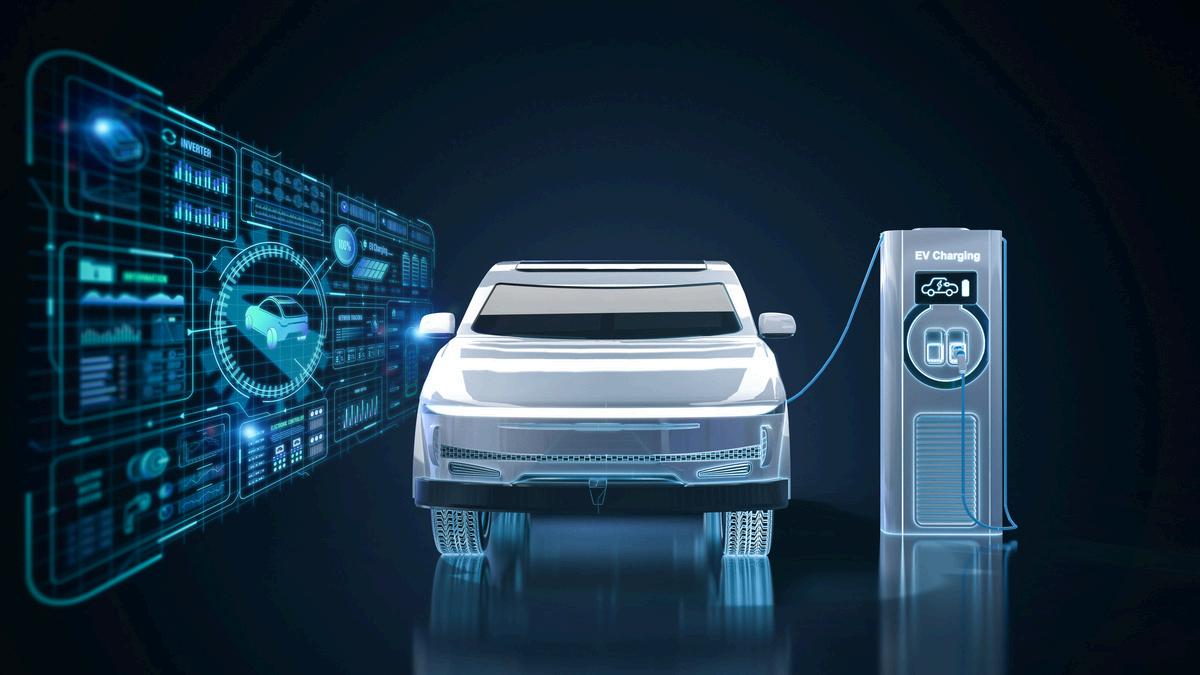
The combination of technology, talent, and policy support is positioning India as a global hub for digital automotive innovation. As vehicles become more connected and intelligent, the line between transportation and technology continues to blur. The industry’s future will be shaped not just by engines and hardware but by data, software, and smart connectivity, driving India toward a new era of sustainable and intelligent mobility

The next generation of electric vehicles is being defined not just by batteries and motors but by the smart connectivity and software systems that power their intelligence As vehicles become more digital, connectivity is transforming how drivers interact with their cars, how vehicles communicate with the grid, and how manufacturers manage performance and safety Today, software innovation is emerging as the most critical differentiator in the EV ecosystem, giving rise to cars that are truly smart, adaptive, and connected
Modern EVs are equipped with embedded sensors, advanced telematics, and over-the-air update capabilities, which allow manufacturers to enhance vehicle performance without physical intervention. This means a car purchased today can continue to evolve, receiving periodic updates that improve battery management, add new features, and fix potential system vulnerabilities This dynamic nature is reshaping the traditional ownership experience and extending the product life cycle. Connectivity also enables real-time vehicle diagnostics, predictive maintenance, and remote monitoring, leading to better safety and efficiency on the road
Vehicle-to-everything (V2X) communication is another key pillar of smart mobility Through V2X, EVs can communicate with each other, traffic infrastructure, and even the power grid This interconnectivity plays a crucial role in improving road safety, reducing congestion, and optimizing energy consumption. For instance, when integrated with smart grids, EVs can help stabilize electricity demand by scheduling charging during low-load periods or even feeding energy back into the grid when required Such advancements create a sustainable energy loop between transportation and power systems
Software-defined vehicles are also redefining manufacturing strategies Automakers are shifting their focus from hardware-centric models to software-first platforms Global brands are investing heavily in operating systems designed exclusively for EVs, allowing seamless integration of infotainment, safety, and driver-assistance systems Artificial intelligence and machine learning are playing vital roles in enabling autonomous driving features and personalizing user experiences From voice recognition to adaptive navigation, the role of software now extends beyond convenience to core vehicle intelligence.
The rise of cloud connectivity and 5G networks is accelerating these transformations High-speed, low-latency communication enables faster data exchange between vehicles and digital ecosystems This not only improves navigation accuracy but also supports real-time data sharing essential for autonomous operations. Edge computing ensures that critical decisions, such as collision avoidance, can be made instantly without relying on remote servers Together, these technologies are turning EVs into mobile computing hubs that combine mobility, intelligence, and sustainability


India’s EV industry is also embracing this digital evolution. Startups and OEMs are developing connected mobility platforms that combine telematics, navigation, and app-based control systems Government initiatives promoting data-driven transportation and smart city integration are further supporting this ecosystem As connected EVs become mainstream, the demand for skilled software engineers, cybersecurity experts, and data analysts in the automotive sector is set to rise sharply.
Ultimately, the future of electric mobility will depend as much on software as on energy Smart connectivity ensures that vehicles are not just electric but intelligent, responsive, and integrated into a broader digital network As software continues to define innovation, the next generation of EVs promises to deliver a driving experience that is safer, more efficient, and deeply connected to the world around it

As we navigate the bustling streets of our cities, it's hard not to notice the chaos that comes with urban transportation Congested roads, pollution, and inefficient public transport systems plague many metropolitan areas. However, with the advent of electric vehicles (EVs) and smart mobility solutions, we have a unique opportunity to transform our cities into hubs of sustainability and efficiency
Electric vehicles are no longer a novelty; they're a necessity With governments worldwide implementing policies to reduce carbon emissions, EVs have become an attractive alternative to traditional fossil-fuel-based transportation Not only do they produce zero tailpipe emissions, but they're also cost-effective in the long run As technology advances, EVs are becoming increasingly affordable, making them a viable option for the masses

Smart mobility encompasses a range of innovative solutions designed to make urban transportation more efficient, sustainable, and user-friendly This includes:
Electric Vehicle Sharing: Car-sharing services that utilize EVs, reducing the need for personal vehicle ownership and promoting a more efficient use of resources
Smart Public Transit: Intelligent public transportation systems that optimize routes, reduce congestion, and provide real-time information to commuters
Digital Payment Systems: Cashless payment systems that simplify transactions, making it easier for people to use public transport or ride-hailing services
Autonomous Vehicles: Self-driving cars that can navigate roads safely and efficiently, potentially reducing accidents and traffic congestion
The benefits of smart mobility are multifaceted:
Reduced Emissions: By promoting the use of EVs and efficient public transport, smart mobility can significantly reduce greenhouse gas emissions and improve air quality
Increased Efficiency: Smart mobility solutions can optimize traffic flow, reducing congestion and travel times
Improved Safety: Autonomous vehicles and intelligent public transit systems can minimize accidents and enhance road safety.
While smart mobility holds tremendous potential, there are challenges to overcome:
Infrastructure: Widespread adoption of EVs requires significant investment in charging infrastructure
Regulations: Governments must create policies that support the growth of smart mobility while ensuring safety and security
Public Awareness: Educating the public about the benefits of smart mobility is crucial for widespread adoption.
As we move towards a smarter, more sustainable urban future, it's essential to prioritize innovation, collaboration, and investment in smart mobility solutions Governments, private companies, and individuals must work together to create a transportation ecosystem that's efficient, environmentally friendly, and user-centric.
By embracing electric vehicles and smart mobility, we can transform our cities into vibrant, livable spaces that prioritize sustainability and efficiency The future of urban transport is digital, electric, and smart –and it's up to us to shape it.



India is at a pivotal moment in mobility The shift from traditional vehicles to electric, connected, and shared transport is gathering pace Behind this change is a fast-growing need for digital infrastructure Investors who understand this landscape can find strong opportunities that support cleaner, safer, and more efficient travel
Digital infrastructure for mobility covers many elements. It includes public and private charging networks for electric vehicles (EVs), high-speed wireless connectivity like 5G, cloud platforms and data centres that store and process vehicle and transport data, traffic management systems, and the software that ties them together Each piece creates value on its own, but together they form an ecosystem that allows vehicles, roads, utilities, and users to interact smoothly
Charging networks are the most visible part of the story. Public chargers require both hardware and a digital layer that handles payments, reservations, grid signals, and backend monitoring Investors can back charging station rollouts, software firms that provide charge point management systems (CPMS), or platforms that aggregate charging data As India pushes EV adoption with subsidies and mandates, charging demand will grow, creating predictable revenue streams for smart operators
Connectivity and edge computing are equally important. Modern vehicles generate large volumes of data from sensors, cameras, and control systems Low-latency networks and local compute resources enable real-time applications such as advanced driver assistance, vehicle-to-infrastructure communication, and platooning Telecom firms, tower companies, and edge data centres will see new revenue lines as auto makers and fleet operators contract for dedicated connectivity and processing
Smart traffic management and mobility-as-a-service platforms help cities reduce congestion and emissions These systems rely on sensors, cameras, and software to optimize signals, routes, and public transport schedules. Investment in municipal digital systems, integrated payment solutions, and open data platforms can yield social benefits and steady public or concession-based returns

Energy systems tie the mobility and digital layers together Vehicleto-grid (V2G) services, battery storage, and demand-response platforms can stabilize the grid while creating additional income for EV owners Investors with a view across energy and transport can capture synergies by financing distributed energy resources and the software that orchestrates them
Risk and regulation are part of the picture Data privacy, cybersecurity, interoperability standards, and land use rules will shape winners and losers Active investors should look for partners with technical know-how and strong regulatory engagement. Public–private partnerships (PPPs) and blended finance models can reduce early-stage risk for capital-intensive projects
Where are the best entry points? Software platforms for fleet management and CPMS, edge computing and telecom plays, scalable charging rollouts in high-density corridors, and integrated energy-mobility services stand out Funds targeting infrastructure, growth-stage tech, and green assets can build diversified exposure
India’s smart mobility transition will not be instant, but it will be sustained Digital infrastructure forms the backbone of that change For patient investors who combine sector knowledge with local partnerships, the coming decade promises both impact and returns as India moves towards a cleaner, more connected transport future and prosperity

The rapid growth of cities places significant pressure on how people move within them and how they engage with the urban environment Urban India is already grappling with excessive congestion, poor air quality, and rarely reliable public transportation
According to the World Bank, in terms of cost alone, traffic congestion costs Indian cities about $22 billion in lost productivity and wasted fuel. If urban centers are going to continue being growth engines we need smarter, sustainable mobility solutions.
Electric vehicles (EVs), combined with digital technologies are at the center of this transformation The conversation about EVs is less about replacing fuel powered engines with batteries, but about a larger shift to smart mobility for smart cities
A vision for a smart city signifies sustainability, efficiency, and improved quality of life In every urban ecosystem transport is a vital element EVs contribute directly by:
Reducing Air Quality Pollution: Cities like Delhi, Bengaluru, and Mumbai, rank amongst the most polluted places in the world By transitioning to EVs we can have a substantial positive impact on tailpipe emissions
Reducing Noise Pollution: The low noise levels associated with EVs improve the urban soundscape, making cities more pleasant to live in
Contributing Towards Net Zero Targets: With Indian cities targeting Net Zero by 2070 urban electrification of transport is a step in the right direction
But EVs cannot do this alone They can only make a difference when incorporating digital technology towards smarter, connected mobility solutions that improve efficiency
Data drives smart cities In the context of mobility, digital innovations create opportunities around mobility:
Telematics and IoT: Sensors in EVs can provide data on location, energy usage and driver habits in real-time, allowing a clear view of routes taken, downtime to remedy inefficiencies, and reliability of service
AI and Predictive Analytics: Monitoring use patterns allows cities to predict demand for mobility, manage traffic flow to satisfy and smooth demand and optimize deployment of charging infrastructure
Integrated Mobility Platforms: Digital applications that bring together EV fleet routing, public transport routing and shared mobility into a single interface ensure seamless commuting
Smart Charging Infrastructure: Cloud-based platforms allow the coordination of loads across vehicles through dynamic load balancing, which provides charging capacity but does not push demand beyond supply at the grid level
Fleet operators such as ARC Electric already show that telematics and AI systems can lead to more predictable and efficient electric vehicle fleets for mass corporate commuting on a larger scale
Data drives smart cities In the context of mobility, digital innovations create opportunities around mobility:
Infrastructure Gaps: The availability of public charging is still far short of international standards
Unequal Access: Urban areas are adopting EVs, but smaller cities and peri-urban transportation options are not moving at the same pace.
Policy and Coordination: This type of collaboration won't work unless there is coordination between governments, mobility providers and technology developers
By moving beyond the metro into Tier 2 and Tier 3 cities with EV fleet services, companies like ARC Electric demonstrate the potential opportunities and challenges to designing inclusive urban mobility systems
The intersection of EVs and digital technology can transform mobility in Indian cities Consider fleets of EVs that are digitally connected and nuanced with metro networks, charged using renewable energy through smart grids, and optimized in real-time by AI this is not a fantasy, but rather a scenario worth pursuing, presuming we take mobility seriously as an integral aspect of our smart city vision.
For urban practices in India to be sustainable, mobility must be cleaner, smarter, and more inclusive EVs made smarter through digital technology will get us there
As ARC Electric and its fellow providers of visionary mobility achieve scale, their learning can provide insight into how digital-first EV fleets can transform India's urban transport ecosystem



India’s electric vehicle (EV) sector has been witnessing a significant transformation over the last few years, driven largely by supportive government policies and regulatory frameworks These policies are not only promoting the adoption of EVs but are also accelerating the digitalization of the entire automotive industry The country’s vision for a sustainable and low-emission future has led to a structured approach where policy and technology go hand in hand, creating opportunities for innovation and digital integration
One of the major policy drivers is the Faster Adoption and Manufacturing of Hybrid and Electric Vehicles (FAME) scheme Initially launched in 2015 and now in its second phase, FAME provides incentives for both manufacturers and consumers The financial support for EV purchases encourages the integration of smart technologies such as connected vehicle systems, battery monitoring applications, and digital charging solutions This scheme motivates automakers to adopt advanced digital tools in production, fleet management, and after-sales services, creating a digitally enabled ecosystem
In addition to subsidies, the government is emphasizing the development of a robust charging infrastructure Policies such as the National Electric Mobility Mission Plan and the recent announcements under the Production Linked Incentive (PLI) scheme for EV components are pushing manufacturers to implement smart charging solutions, digital payment systems, and app-based charging management. This not only makes EV adoption convenient for consumers but also encourages data-driven approaches in infrastructure planning and energy management. The use of IoTenabled charging stations, real-time tracking of battery performance, and digital platforms for route optimization are becoming standard practices
India’s regulatory focus on standardization and interoperability also supports digital adoption Guidelines on EV battery swapping, vehicle-to-grid integration, and telematics ensure that manufacturers and service providers adopt common digital protocols This standardization facilitates seamless communication between vehicles, charging stations, and energy grids, enabling better monitoring, predictive maintenance, and efficient energy usage. Digital platforms are being used to collect and analyze data from EVs, which helps companies optimize performance, reduce downtime, and improve customer experiences
Moreover, state-level policies and incentives play a crucial role States such as Maharashtra, Karnataka, and Gujarat are introducing digital vehicle registration, online incentives for EV buyers, and smart city integration projects These initiatives make it easier for consumers to adopt EVs while pushing manufacturers to digitize their operations, from production planning to sales analytics
The combination of federal and state policies is encouraging collaboration between automakers, technology providers, and energy companies Startups focusing on EV telematics, battery management software, and AI-powered analytics are growing rapidly, further driving digital adoption in the sector By creating a favorable policy environment, India is ensuring that the EV ecosystem is not only environmentally sustainable but also technologically advanced
India’s EV policies are acting as a catalyst for digital transformation across the auto sector By incentivizing EV adoption, encouraging smart infrastructure, and promoting standardization, these policies are enabling manufacturers and service providers to embrace digital solutions. This digital shift is improving operational efficiency, enhancing consumer experiences, and building a future-ready automotive ecosystem that supports sustainable growth and technological innovation


As urban areas grow rapidly around the world, the strain on transport systems is becoming increasingly visible Congestion, air pollution, and inefficiencies cost time, health, and money In India, EV sales crossed INR 20 lakh ($ 2M) units in FY 2025, with two-wheelers (E2Ws) making up over 50% of those sales. Total cumulative EVs registered in India reached approximately INR 61 66 lakh by March 2025 These numbers point toward a transformation in urban mobility, a shift that smart cities must embrace through clean vehicles and digital technologies
The move toward electric mobility is no longer limited to cars. Twowheelers, three-wheelers, buses, cycles, and shared fleets are also part of the picture For urban dwellers, students, and young professionals, electric bikes or cycles offer affordability, health benefits, and zero tailpipe emissions However, infrastructure remains uneven Safe cycling lanes are often absent, charging facilities are sparse, and parking for e-bikes and cycles is poorly planned Even in university towns, where e-cycling would seem natural, large-scale assets like metro lines get priority, even when they do not fully solve daily mobility needs This underlines the importance of people-centric planning rather than project-centric slogans.
Digital technologies are transforming EVs from mere replacements for petrol or diesel vehicles into smarter, integrated mobility solutions IoT enables real-time diagnostics, smart charging, and fleet optimization, while AI supports predictive traffic control, dynamic routing, demand forecasting, and even autonomous mobility pilots Data analytics and Mobility-as-a-Service (MaaS) platforms further unify modes like public transit, EVs, and micromobility into seamless door-to-door journeys Together, these tools make EVs cleaner, more efficient, and more connected, cutting costs, improving uptime, reducing wait times, and lowering emissions
Infrastructure remains the biggest barrier to EV adoption, demanding reliable charging networks integrated with digital payments, intermodal hubs that seamlessly connect micromobility with public transport, and intelligent traffic systems that respond to real-time flows Picture a student in Pune cycling to a metro station, securely parking and charging their e-bike, and then continuing by metro without relying on a car This is the kind of integration cities must enable Without it, even motivated users face daily friction that slows adoption.
Government policy must do more than subsidies India’s FAME II, the EMPS (Electric Mobility Promotion Scheme), and other incentive schemes have helped EV sales grow rapidly But policy must also
support planning for cycling lanes, shared EV fleets, zoning and permitting, parking rules, EV infrastructure in new housing and commercial developments
Public-private partnerships (PPPs) are critical. Startups, OEMs, infrastructure providers, and municipal governments each bring strengths For instance, local manufacturers can supply bikes or cycles suited to local terrain; infrastructure firms can build smart chargers; city governments ensure regulatory support and land usage; private investment can help scale rapidly.
Example of Home-Grown Innovation
VIR Mobility exemplifies what India can do in this space VIR produces e-bikes (electric bicycles) designed and built entirely in India Key features include an IP65/67 rating for durability, disc brakes with motor cut-off for safety, lightweight yet strong frames, and user-friendly components A notable innovation is the use of USB-Type-C connectors on the e-bike, a global first in its category, minimising user error and enhancing safety
Looking forward, urban mobility will evolve beyond personal ownership and fixed schedules toward mobility as a service Shared ebikes and e-scooters, subscription models for electric vehicles, autonomous or semi-autonomous shuttles, and integration with renewable energy (solar or grid) will become more common EVs will increasingly serve as data nodes for understanding usage patterns, emissions profiles, and infrastructure stress points
Successful mobility systems will be those built around the daily lives of people, students, commuters, and families, not merely through topdown infrastructure projects Cities that plan for connected, flexible, clean transport and involve citizens in design will succeed in creating cleaner, more resilient futures
Smart mobility is therefore not simply about replacing petrol cars with EVs It is about designing systems that are efficient, interconnected, and human-centred. For India, and for smart cities everywhere, the promise is real, but realization depends on policies, infrastructure, and innovations, such as those from companies that put people first




India’s automotive industry is undergoing one of its most transformative shifts, moving from a hardware-driven model to a software-defined ecosystem This change is redefining how vehicles are designed, manufactured, operated, and maintained Traditionally, the automotive sector focused on mechanical engineering and component optimization. Today, however, it is software that determines a vehicle’s intelligence, performance, and customer experience
Software-defined vehicles, or SDVs, represent the next evolution in mobility, where digital technologies govern most functions from safety systems and energy management to infotainment and predictive maintenance The rapid growth of electric vehicles, connected mobility, and autonomous features has accelerated this transition Automakers in India are now integrating more advanced computing systems and cloud-based platforms to enhance vehicle performance and connectivity.
Leading automakers and technology firms are investing in developing operating systems, over-the-air (OTA) updates, and vehicle data platforms that allow cars to evolve throughout their lifespan With OTA capabilities, new features and security patches can be deployed without physical intervention, similar to how smartphones are updated This innovation significantly reduces maintenance costs and enhances customer satisfaction
The rise of artificial intelligence and machine learning is also influencing how vehicles interact with drivers and the environment. Smart sensors and telematics collect data in real time, improving vehicle efficiency and safety Companies are creating digital twins of vehicles to simulate real-world performance, allowing faster and more accurate product development
India’s growing pool of software engineers and the country’s strength in IT services give it a strategic advantage in this transformation Global
automakers are increasingly setting up R&D and software development centers in India to tap into local expertise. The government’s push toward electric mobility, combined with policies encouraging digital innovation, is further driving this momentum
Startups are also playing a vital role by developing innovative software solutions for fleet management, predictive maintenance, and battery performance monitoring. Partnerships between traditional OEMs and technology companies are becoming common, signaling a new era of collaboration in the automotive ecosystem
However, the shift is not without challenges Legacy systems, limited cybersecurity readiness, and the need for large-scale retraining of the workforce are major concerns. The transition requires integration of mechanical reliability with software agility, which demands new design frameworks and robust testing environments

To ensure long-term success, automakers are focusing on building software-defined architectures that allow continuous improvement, scalability, and interoperability This approach enables the same hardware to support multiple models and updates over time, reducing production costs and increasing sustainability
India’s journey toward software-defined mobility reflects a broader global trend where the car becomes a platform for digital innovation As vehicles evolve into intelligent, connected systems, the boundary between technology and transportation continues to blur. The transition is setting the foundation for a future where data-driven intelligence defines not only how we drive but also how we live and move

Digitization has touched almost every part of our lives From ordering groceries online to managing finances on a mobile app, technology has made life easier and faster The electric vehicle (EV) sector is no different It has not been just about replacing fuel with batteries but about creating an entirely new ecosystem that is smarter and more transparent From the way vehicles are designed to how customers experience their rides, digitization is refining every layer of this industry
Smarter Designs with Simulation and 3D Printing
An EV’s journey begins long before the first component is put in place In the digital era, product design itself has become smarter. Using advanced simulation techniques and the concept of digital twins, engineers can create a virtual replica of the motorcycle and test it in different road and weather conditions This helps predict performance, identify weaknesses, and refine the design without wasting physical resources
Earlier, companies depended on clay models for product development, a process that took weeks and demanded high manual effort Today, 3D printing allows teams to make quick design changes, test them instantly, and move faster with minimal energy loss This approach not only saves time and resources but also brings the voice of the customer directly into the design process at a much faster pace
According to McKinsey, digital twin technology can cut product development time by up to 30% With simulation, engineers can predict how a motorcycle would perform on a hot Chennai highway versus a rainy Bengaluru street, all before a physical prototype is built
Unlike internal combustion engine (ICE) vehicles, EVs are fundamentally software-driven machines Data is the fuel that keeps them running smarter every day In ICE vehicles, predicting the life of a vehicle or its components is nearly impossible. But in EVs, digitization makes it possible to estimate the lifespan of parts, anticipate potential breakdowns, and even locate the exact source of an error This ensures that an issue faced by one rider does not spill over to affect others The result? Higher reliability and stronger customer confidence
Once the design is ready, digitization transforms how manufacturing unfolds. Raw materials are tracked digitally from the moment they are sourced, ensuring timely allocation and transparency Every stage from assembly to battery installation to testing can be monitored in real time
Customers, too, are part of this journey When they place an order, digital systems keep them updated about where their motorcycle is in the production cycle This builds trust while also helping manufacturers optimize operations and avoid delays. Delivery is further streamlined b dealer management systems (DMS), which align production capacity customer demand
A factory’s efficiency depends on how well it manages its inventory W digitization, stock levels are monitored in real time, reducing shorta and preventing costly overstocking Robotics and automation fur improve efficiency. Robotic arms, combined with IoT sensors and assemble components with unmatched precision and even self-cor when errors occur
The integration doesn’t stop there Platforms that connect finance, ERP, MES (Manufacturing Execution Systems), vendor portals, and customer service into one ecosystem ensure everyone from suppliers to product developers works on the same data in real time. Earlier, customer complaints had to move from the service team to the plant team and then to the product development team Now, the moment a customer logs an issue in the app, all relevant teams are notified instantly and can act together The voice of the customer reaches everyone equally and immediately
EVs provide a constant stream of component-wise data, which was never possible in ICE vehicles This allows manufacturers to model reliability around service data, track failure trends, and plan proactively. For example, spare parts can be stocked based on predictive failure data rather than assumptions This improves spare management, ensures better resource allocation, and enhances customer satisfaction since issues are addressed faster and more accurately
For customers, digitization makes every ride smarter Connected systems provide real-time ride statistics, battery health updates, and predictive alerts Riders get personalized insights to make their journeys smoother, while manufacturers collect real-world usage data to improve the next generation of vehicles. Mobility, therefore, becomes more than just moving from one point to another It becomes a data-driven experience
Traditionally, quality checks happened at the end of production Now, sensors and monitoring systems track quality at every stage If a welding robot performs below standard, alerts are raised instantly, preventing defects from being passed on Deloitte reports that such systems can cut defects by 20-40%, saving millions in recall costs This ensures higherquality vehicles, faster turnaround times, and happier customers
One of the most powerful impacts of digitization is its contribution to sustainability. Smarter raw material use, optimized energy consumption, and reduced wastage ensure a lower environmental footprint across the vehicle’s entire lifecycle Sustainability is no longer an afterthought; it is built into every stage from design to manufacturing to daily use.
The EV revolution is not just about swapping fuel for batteries; it is about transforming the entire ecosystem Digitization is the backbone of this change It connects every step from design and production to service and customer experience making operations smarter, vehicles more reliable, and mobility more engaging



India’s electric vehicle (EV) industry is undergoing a profound transformation, driven by the rapid adoption of digital technologies that are reshaping business models, consumer experiences, and operational efficiency This digital shift is no longer just an adjunct to manufacturing and sales; it has become the backbone of a new, datadriven approach that is defining the future of mobility in the country. From the design and production of vehicles to after-sales service and energy management, digital tools are enabling companies to respond faster to market demands and optimize resources efficiently
One of the most notable impacts of digital transformation in India’s EV sector is on manufacturing Advanced software solutions, such as digital twins and predictive analytics, are being used to simulate vehicle performance, optimize supply chains, and reduce production costs These tools allow manufacturers to test multiple design scenarios virtually, minimizing the risk of defects and accelerating the time-to-market for new models. Companies like Ola Electric, Tata Motors, and Mahindra Electric are increasingly investing in such technologies to enhance precision, reliability, and scalability in EV production
On the consumer side, digitalization is reshaping the way buyers interact with EV brands Online configurators, mobile apps, and AIpowered customer support platforms are providing personalized experiences, from selecting a vehicle model to scheduling test drives and service appointments Additionally, connected vehicle technologies allow real-time monitoring of battery health, energy

consumption, and vehicle performance These insights not only improve user experience but also provide manufacturers with valuable data to enhance product development and predictive maintenance strategies
The growth of EV charging infrastructure in India is also being accelerated by digital solutions Smart charging networks, equipped with IoT-enabled chargers and cloud-based management systems, allow for seamless integration of renewable energy sources and real-time monitoring of grid impact. Mobile applications guide users to available charging points, enable payment processing, and even optimize charging based on electricity tariffs Such innovations are essential for addressing range anxiety and encouraging wider adoption of electric mobility
Furthermore, digital platforms are enabling innovative business models that are redefining ownership and mobility in India Subscription-based services, battery-as-a-service (BaaS) offerings, and vehicle leasing solutions rely on data-driven insights for flexible and cost-efficient operations By leveraging digital ecosystems, companies can improve asset utilization, reduce upfront costs for consumers, and accelerate EV penetration in both urban and semiurban markets.
Government initiatives like the Faster Adoption and Manufacturing of Hybrid and Electric Vehicles (FAME) scheme, coupled with policies promoting smart mobility and digital payments, provide a strong foundation for this digital transformation Startups and established players alike are leveraging these opportunities to create an interconnected EV ecosystem that is efficient, sustainable, and consumer-centric
Digital transformation is not merely a technological upgrade for India’s EV industry it is a strategic imperative that is shaping the business landscape. From manufacturing to customer engagement, energy management, and innovative business models, digital tools are enabling companies to navigate the challenges of a rapidly evolving market while enhancing operational efficiency and consumer satisfaction As India accelerates toward a low-carbon future, the convergence of digital technology and electric mobility promises to define a new era of growth, innovation, and competitiveness in the nation’s EV sector.

India’s EV story has moved beyond just new sales In many cities, the first wave of two- and three-wheelers is now hitting the secondary market and cars will follow soon Fleets want to rotate assets, owners want upgrades, and dealers see demand but hesitate to stock Banks are curious but conservative And the first question everyone asks remains the same: “How’s the battery? What can I get when I resell?”
In the pre-owned EV space, working closely on certification, valuation, and financing makes the bottlenecks evident The three major gaps are battery health transparency, valuation consistency, and financing friction
The first challenge is the invisibility of true battery health at resale Unlike in ICE vehicles, an odometer and service record say little about an EV What really matters is State of Health (SoH), Remaining Useful Life (RUL), and the actual usable range Yet most resales rely on superficial checks like showing a “100% charge,” which reflects only the current state of charge, not underlying health Without a standard protocol, tests vary widely, and pack-level numbers often mask celllevel weaknesses What the market needs is a simple, trusted score that consolidates real battery data into two things buyers and lenders care about: range today and useful life tomorrow That score also needs independent certification so it travels with the vehicle at the point of resale.
The second challenge is valuation. Today, two identical scooters can clear at prices that differ by 20–30 percent because everyone is guessing the battery’s condition. Kilometers driven are often used as a proxy, but EV batteries degrade more with calendar time, charging habits, and usage patterns than distance alone. Delivery fleets, for example, put far more stress on packs than personal commuters Residual value tables being used today rarely reflect this reality What’s needed is a rules-plus-data approach certified battery and drivetrain health combined with local market demand and pack replacement economics Ideally, resale should offer two price points: the vehicle’s value as-is, and its value with a certified pre-owned battery and drivetrain That flexibility can turn “no” into “yes” for many buyers and lenders
The third barrier is financing Lenders are warming to new EVs b hesitate on used ones because they lack standardized heal certificates, clear rules on whether batteries can be secured a collateral, and efficient resale channels for repossessed asset Without these, risk premiums shoot up and financing dries out uniform health certificate, machine-readable and lender-friendl could change this So could clear lien tagging for both chassis an packs, coupled with streamlined repossession and certified resa channels With these in place, NBFCs and banks could confident underwrite EVs
There are also policy and ecosystem gaps to address India needs standard SoH testing protocol aligned with AIS/BIS, published as tamper-proof certificate A digital “battery passport” with certificatio
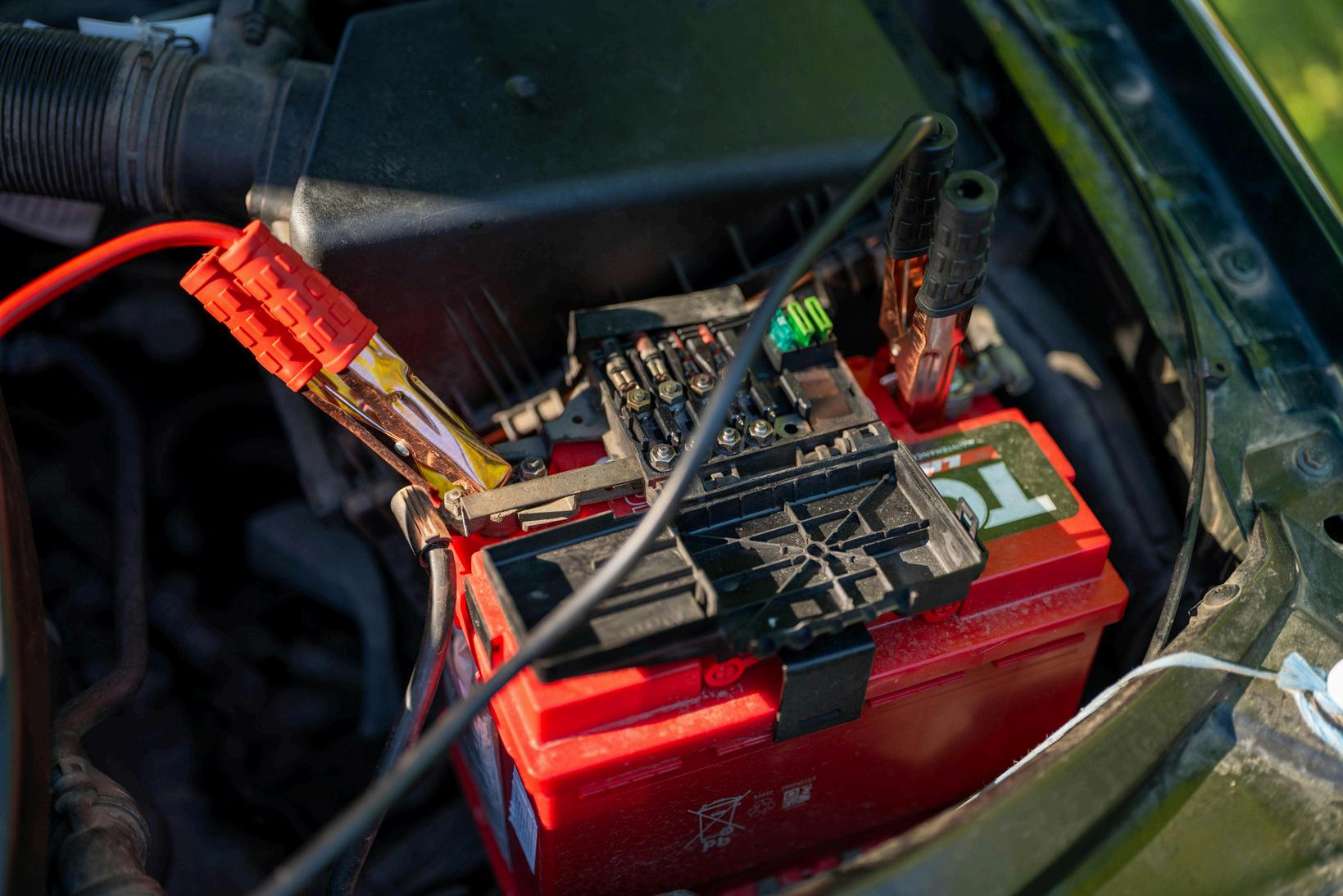
should be mandated at RC transfer, logging pack ID, health, and warranty status Certified pre-owned EVs deserve GST and warranty parity, which would make mid-life upgrades affordable and safe Finally, clear norms for second-life and end-of-life modules are critical to prevent unsafe reuse and to preserve value for financiers.
If these changes are implemented, the benefits will ripple across the ecosystem. Dealers will stock confidently, lenders will offer rational credit, fleets will extend asset life through predictable battery replacement strategies, and consumers will finally understand what they are buying without technical jargon just a clear picture of usable range and remaining life
The shift to pre-owned EV adoption can be accelerated through three key enablers: a reliable system to assess battery health and range consistency; a certified pre-owned program with independently tested packs under warranty; and instant sell or auction channels that enable quick valuation, certification, and seamless digital transactions
The used-EV market is not waiting for a miracle It is waiting for shared truth about batteries, simple rules for financing, and clear rails for resale With trust as the real infrastructure, India’s used-EV ecosystem can unlock its full potential



India’s automotive industry is undergoing one of its most transformative shifts, moving from a hardware-driven model to a software-defined ecosystem. This change is redefining how vehicles are designed, manufactured, operated, and maintained Traditionally, the automotive sector focused on mechanical engineering and component optimization Today, however, it is software that determines a vehicle’s intelligence, performance, and customer experience
Software-defined vehicles, or SDVs, represent the next evolution in mobility, where digital technologies govern most functions from safety systems and energy management to infotainment and predictive maintenance The rapid growth of electric vehicles, connected mobility, and autonomous features has accelerated this transition Automakers in India are now integrating more advanced computing systems and cloud-based platforms to enhance vehicle performance and connectivity
Leading automakers and technology firms are investing in developing operating systems, over-the-air (OTA) updates, and vehicle data platforms that allow cars to evolve throughout their lifespan With OTA capabilities, new features and security patches can be deployed without physical intervention, similar to how smartphones are updated This innovation significantly reduces maintenance costs and enhances customer satisfaction.
The rise of artificial intelligence and machine learning is also influencing how vehicles interact with drivers and the environment Smart sensors and telematics collect data in real time, improving vehicle efficiency and safety Companies are creating digital twins of vehicles to simulate real-world performance, allowing faster and more accurate product development
India’s growing pool of software engineers and the country’s strength in IT services give it a strategic advantage in this transformation Global automakers are increasingly setting up R&D and software development centers in India to tap into local expertise The government’s push toward electric mobility, combined with policies encouraging digital innovation, is further driving this momentum
Startups are also playing a vital role by developing innovative software solutions for fleet management, predictive maintenance, and battery performance monitoring Partnerships between traditional OEMs and technology companies are becoming common, signaling a new era of collaboration in the automotive ecosystem
However, the shift is not without challenges. Legacy systems, limited cybersecurity readiness, and the need for large-scale retraining of the workforce are major concerns. The transition requires integration of mechanical reliability with software agility, which demands new design frameworks and robust testing environments
To ensure long-term success, automakers are focusing on building software-defined architectures that allow continuous improvement, scalability, and interoperability This approach enables the same hardware to support multiple models and updates over time, reducing production costs and increasing sustainability
India’s journey toward software-defined mobility reflects a broader global trend where the car becomes a platform for digital innovation. As vehicles evolve into intelligent, connected systems, the boundary between technology and transportation continues to blur The transition is setting the foundation for a future where data-driven intelligence defines not only how we drive but also how we live and move
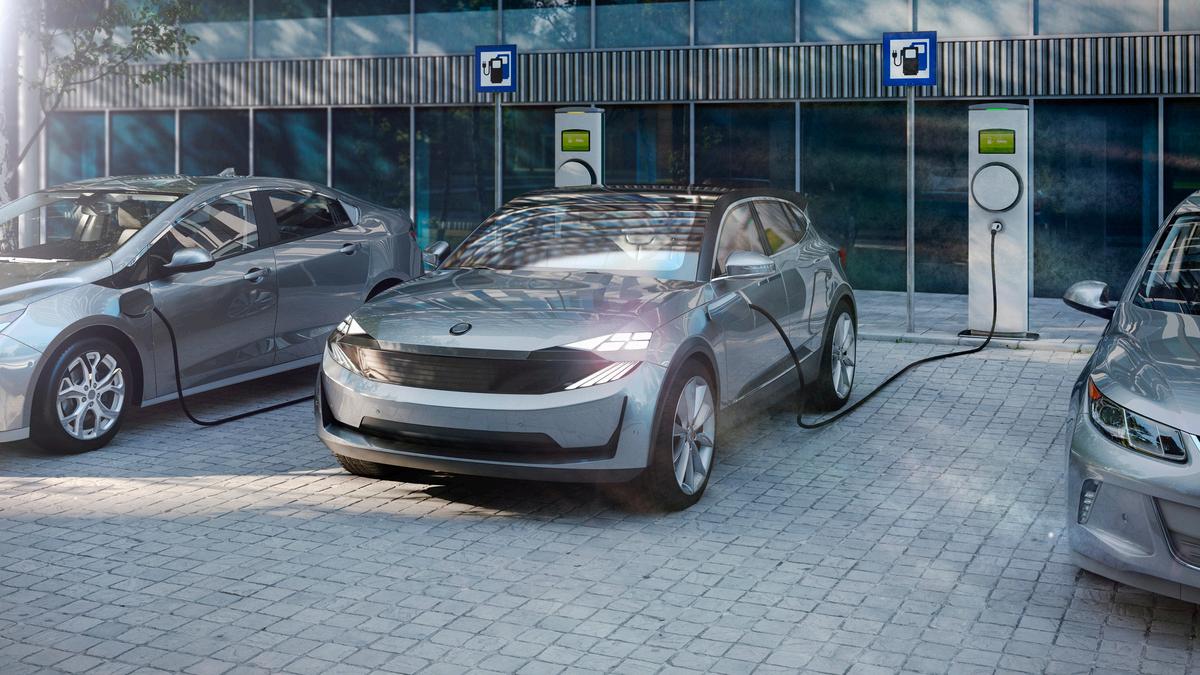


India’s transport story is changing fast. The country is building an electric mobility network that connects vehicles, batteries and charging stations through data What was once a question of cleaner fuel has become a test of coordination Today, over 29000 public charging points operate across major cities, while millions of battery swaps keep electric vehicles moving without long stops The shift is not just about numbers It shows how digital tools are starting to manage the way cities use power, move people and plan traffic Sensors inside batteries, automated charging docks and data-led traffic systems are making transport both cleaner and quicker.
This change runs through every part of the system. The network of chargers and swap stations now acts as an information grid as much as a power source Each unit records temperature, charging speed and usage in real time, sending alerts when faults appear Operators can follow this data minute by minute instead of waiting for breakdowns Public charging capacity has grown from about 16000 points in early 2024 to nearly 30000 by mid-2025, reaching most major urban centres. Battery swapping has grown at the same pace. One leading network runs close to 1500 swap stations in fifty cities, handling around 125,000 swaps daily. Another manages roughly 600 hubs in 18 cities and has already completed more than eleven million swaps, covering over 280 million kilometres of travel
Fleets and network operators are now able to stream battery voltage, temperature, charge rate and usage logs into cloud systems that flag anomalies before they turn into breakdowns Field experience in India shows that battery, motor and control units can emit roughly a hundred data points every few seconds, which allows operators to track state of health over months and time a swap or service before a road failure Telematics and over-the-air updates then close the loop If a drive inverter starts to slip, a calibration patch can go out the same day If a pack shows faster-than-normal degradation, the system orders it out of service and schedules a diagnostic slot
Two results stand out. First, uptime rises because preventive work replaces emergency calls A leading swap network reports automatically flagging 500 to 600 anomalous batteries each week for inspection, which reduces the odds of overheating and keeps queues moving during peak hours Second, energy use gets smarter Fleet dashboards match route demand with charge levels so that vehicles leave depots with the right buffer and return on offpeak tariffs Location traces from millions of daily kilometres help identify where to place the next swap kiosk or fast charger to cut detours and idle time. At the city scale, these gains compound. More reliable assets and shorter dwell times mean fewer empty runs and lower grid spikes during the evening rush.

This has caused EV makers to shift to Industry 4 0 methods Robotics, IoT tags on parts, and digital twin simulations shorten build cycles and raise line yields, which matters when models refresh quickly and demand is uneven across states. These connected factories sit inside a policy frame that links hardware to data. The PM E-DRIVE scheme, launched in September 2024, aims to build a smart manufacturing ecosystem for EVs with digital vouchers, IoT monitoring, and AI analytics It includes ₹780 crore for digital upgrades at testing facilities and ₹2,000 crore for charging infrastructure Power Ministry guidelines in 2024–25 standardised how chargers and swap networks should operate and communicate so that every new node can be supervised centrally rather than as a stand-alone asset. The result is a backbone where the dock on a street corner and the pack inside a two-wheeler are both data sources.


EV fleet platforms in India now offer a single dashboard that shows live vehicle locations, state of charge, swap inventory at nearby stations, charger faults and driver status Managers can throttle charging schedules, dispatch mobile charging where a station is running low, and trigger maintenance based on health scores rather than fixed intervals Integrated Command and Control Centres built under the Smart Cities Mission already fuse traffic feeds, CCTV and ITS data Where EV and charging APIs are linked in, city teams can see energy draw in real time, spot corridors that need extra charging, and adjust signals to move e-buses through bottlenecks. City trials using AI-based traffic control have reported reductions in travel time and approximately 11% lower CO₂ emissions on treated corridors, providing a template for integrating mobility and energy data in daily operations
Speed of deployment depends on digital supply chains as much as on policy Component makers and vehicle plants are adopting connected ERP and logistics, so inventory, purchase orders and shipment status reflect actual demand on the line When a city clears a new charging cluster, the order hits the factory system immediately, installation kits are packed, and commissioning is scheduled without paper back-andforth. Digital twins help retool lines for a new variant in days. This is how networks grow from a handful of kiosks to city-wide coverage within weeks rather than quarters. Financing helps, but the real lever is the tight link between design files, procurement and field rollout that lets teams iterate fast on battery form factors and station layouts while keeping costs under control
The payoff sits beyond the depot fence National guidance calls for a common mobility layer so that public transit, traffic systems and EV services can share data in standard formats. That lets planners see true demand and fill gaps across modes, not just within a single fleet When EV and shared-mobility data flow into the same city platform, actions become more precise Signals can be tuned to give dwell-heavy routes more green time Parking prices can be varied to smooth peaks on polluted days E-bus route choices can follow ridership data rather than legacy schedules This is already visible in programme targets for largescale bus electrification by 2030
While India is making significant progress in smart mobility, several challenges persist The interoperability between various charging and swapping networks is still developing, which may hinder user convenience Additionally, the rise of connected mobility systems has raised concerns about data privacy and cybersecurity Other barriers to widespread adoption include the high upfront cost of EVs, a shortage of skilled personnel in digital operations, and insufficient infrastructure in tier-2 and tier-3 areas. Addressing these issues will be essential for achieving inclusive and sustainable growth in the sector.
Data from electric and shared mobility is beginning to influence urban planning itself NITI Aayog’s policy framework recommends a common digital mobility layer that merges data from traffic A unified view of this data allows planners to close service gaps, balance demand and reallocate road space more effectively
As these systems connect, cities gain the ability to respond in real time to congestion, grid demand and commuter needs India’s electric mobility movement is evolving into something broader: a digital transport framework that supports cleaner air, quicker journeys and more liveable cities



How have government incentives, FAME II policies, and rising EV adoption trends influenced the overall electric twowheeler market in India?
India’s electric two-wheeler market has grown rapidly under strong government support The FAME II scheme, launched in 2019 with an outlay of ₹10,000 crore, was designed to subsidize up to 10 lakh electric two-wheelers These incentives providing up to ₹15,000 per kWh effectively reduced vehicle costs and boosted demand. As a result, sales crossed 1 15 million units in 2024, marking a year-onyear increase of around 33% Revised FAME II targets aimed to support nearly 1 55 million vehicles, of which about three-fourths were achieved
In addition to subsidies, policy measures such as 5% GST on EVs and state-level EV mandates have significantly accelerated adoption Public awareness of electric mobility has risen across Tier-1 and Tier-2 cities, helping create a more informed consumer base that understands the benefits of EV ownership However, a critical gap remains in official data: registrations capture high-speed vehicles but miss a large portion of low-speed models operating across smaller towns and rural India. This underrepresentation skews the actual picture of India’s EV adoption landscape, which is far deeper than current records suggest
What are your views on the evolving EV ecosystem in India, particularly regarding charging infrastructure, financing options, and customer awareness?
Charging Infrastructure: Public charging points in India have expanded steadily, surpassing 12,000 installations by early 2024. However, two-wheelers have distinct
Government incentives, FAME II policies, and GST reductions have accelerated electric two-wheeler adoption across India
Charging infrastructure expansion, financing solutions, and rising consumer awareness are shaping EV ecosystem growth
Mid-range scooters and commercial L5 three-wheelers lead adoption, supported by fleet electrification and urban policy incentives
charging behavior compared to cars most are charged at home or work, given their removable battery design and lower power needs This convenience explains why electric scooters are outpacing cars in adoption Future growth will depend on expanding charging and swapping networks to support the increasing volume of riders and commercial users
Financing Options: Financing remains one of the industry’s weakest links. While demand is high, banks remain cautious about lending for EV two-wheelers, particularly in the low-speed and budget categories Non-banking financial companies (NBFCs) currently dominate the segment but charge interest rates 5–14% higher than for traditional petrol two-wheelers. Mainstream financing is largely available for high-speed scooters from established OEMs, while smaller brands rely on customer selffinancing A broader, more inclusive financing ecosystem is essential to unlock the next wave of growth
Customer Awareness: Consumer education is no longer a primary barrier Awareness about EVs has grown exponentially, with more than 80% of urban consumers indicating willingness to consider an electric scooter Word-of-mouth adoption, social media exposure, and rising fuel prices have collectively shifted sentiment in favor of EVs The adoption rate is increasing by nearly 20% annually, positioning India among the fastestgrowing electric two-wheeler markets globally The focus now should move from awareness to ensuring affordability, charging access, and financing inclusivity
Which regions or product segments are currently seeing the highest growth in India’s two-wheeler EV market?
The strongest adoption has been seen in states with proactive EV policies and large urban populations Maharashtra leads the market with over 210,000 e-2W units sold in 2024, followed by Karnataka and Tamil Nadu Delhi, despite its smaller base, continues to lead on policy intent, with targets mandating full electrification of commercial and passenger fleets between 2027 and 2030. Hyderabad, Bengaluru, and Chennai are also witnessing consistent growth due to fleet electrification, state incentives, and robust dealer networks
In terms of product categories, mid-range passenger scooters priced between ₹80,000 and ₹1,00,000 are driving demand These models balance affordability, performance, and range (70–120 km per charge), making them attractive to both daily commuters and first-time EV buyers The commercial L5 threewheeler segment is also growing rapidly, driven by e-commerce, last-mile delivery, and fleet operators Experts project that electric L5 three-wheelers could achieve 50% penetration in urban markets by 2027–28. Together, commuter e-scooters and electric threewheelers are forming the backbone of India’s EV adoption story


How is competition shaping the strategies of EV brands, and what trends are likely to define market growth in FY26?
The electric two-wheeler market has evolved from being startup-led to brand-driven In 2024, legacy manufacturers such as Hero, TVS, and Bajaj expanded their market share significantly, collectively holding nearly 40% of e-2W sales. April 2025 marked a major milestone, with TVS surpassing Ola Electric as the market leader, followed closely by Bajaj and Ather These established brands are leveraging their widespread service networks and reliability to win customer trust, particularly in Tier-2 and Tier3 cities
Meanwhile, newer entrants continue to innovate in design, connectivity, and affordability The market is seeing a clear segmentation: unbranded, low-speed models compete largely on price, while the high-speed B2B and premium commuter segments compete on service and total ownership cost This differentiation is shaping investment and product strategies across the industry.
Looking ahead, FY26 is expected to sustain double-digit growth, supported by improving supply chains, better financing options, and the government’s continued focus on EV-friendly policies However, the industry faces headwinds from global supply chain volatility and rising prices of critical materials such as copper and rare-earth magnets These inputs, largely controlled by international markets, may impact pricing strategies As a countermeasure, manufacturers are focusing on localizing production, recycling batteries, and developing rare-earth-free motors to mitigate long-term risks
How are advancements in battery technology and product innovation impacting consumer adoption in the Indian EV market?
Battery chemistry and product innovation are central to EV evolution The market is witnessing a steady transition from nickelmanganese-cobalt (NMC) batteries to lithium iron phosphate (LFP) variants that prioritize safety and longevity While NMC cells offer higher energy density and longer range, LFP technology provides superior thermal stability an increasingly critical factor in India’s hightemperature conditions.
Industry-wide, battery management systems (BMS), smart sensors, and stringent BIS standards are now standard expectations At the consumer level, there remains a need to educate users about proper battery maintenance and realistic performance expectations Early fire incidents in the sector served as a wake-up call, prompting OEMs to prioritize safe, well-tested chemistries over aggressive performance claims
Parallelly, product innovation continues to elevate user experience Today’s electric scooters deliver 80–120 km real-world range, speeds exceeding 70 km/h, and connected features such as mobile integration, remote diagnostics, and over-the-air updates The total cost of ownership is also highly favorable running costs are as low as 15–20 paise per kilometer compared to ₹1.20 for petrol bikes. These advances have helped establish EVs as viable, cost-efficient alternatives for both individual and commercial riders
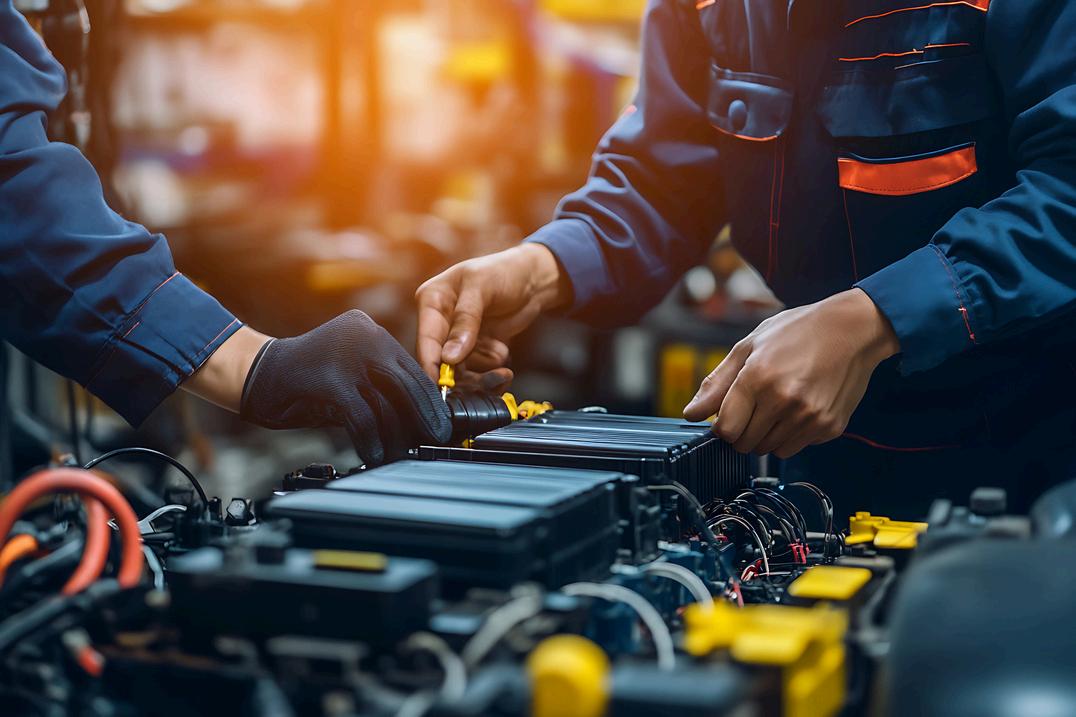
“India’s electric twowheeler market has proven its potential but sustaining it will depend on how fast we can build trust, infrastructure, and financial inclusion around it.”
How has Enigma EV’s business strategy evolved over the past year to sustain rapid growth in a competitive EV market?
Over the past year, Enigma Automobiles has strengthened its operational model while refining its market focus The company continues to emphasize product quality, safety, and post-sales service core reasons behind its strong brand credibility Every Enigma vehicle is powered by LFP battery technology, ensuring superior thermal stability and zero fire incidents, a distinction that underscores its engineering rigor and safety-first philosophy.
Strategically, Enigma has pivoted towards the B2B and fleet segments, where reliability, service, and uptime are critical This shift has been complemented by a focused effort to expand service coverage and maintain affordable pricing The company’s core differentiator lies in its after-sales support network, which has proven particularly valuable for delivery and logistics operators seeking dependable vehicles for daily operations
Financially, Enigma secured a ₹6 5 crore credit facility from the State Bank of India in 2025 to enhance production capacity and expand into high-demand Tier-1 markets such as Bengaluru, Delhi, and Hyderabad The company has also forged partnerships with fleet operators for large-scale vehicle deployment, reinforcing its transition into organized B2B sales.
With India’s e-2W sales up nearly 18% in the first half of FY26, Enigma’s steady growth trajectory mirrors broader industry momentum By focusing on durable products, robust aftersales service, and a targeted B2B strategy, Enigma Automobiles has positioned itself as a resilient and responsible brand in a fastevolving electric mobility landscape

SOURCE: VAHAN DASHBOARD

SOURCE: VAHAN DASHBOARD


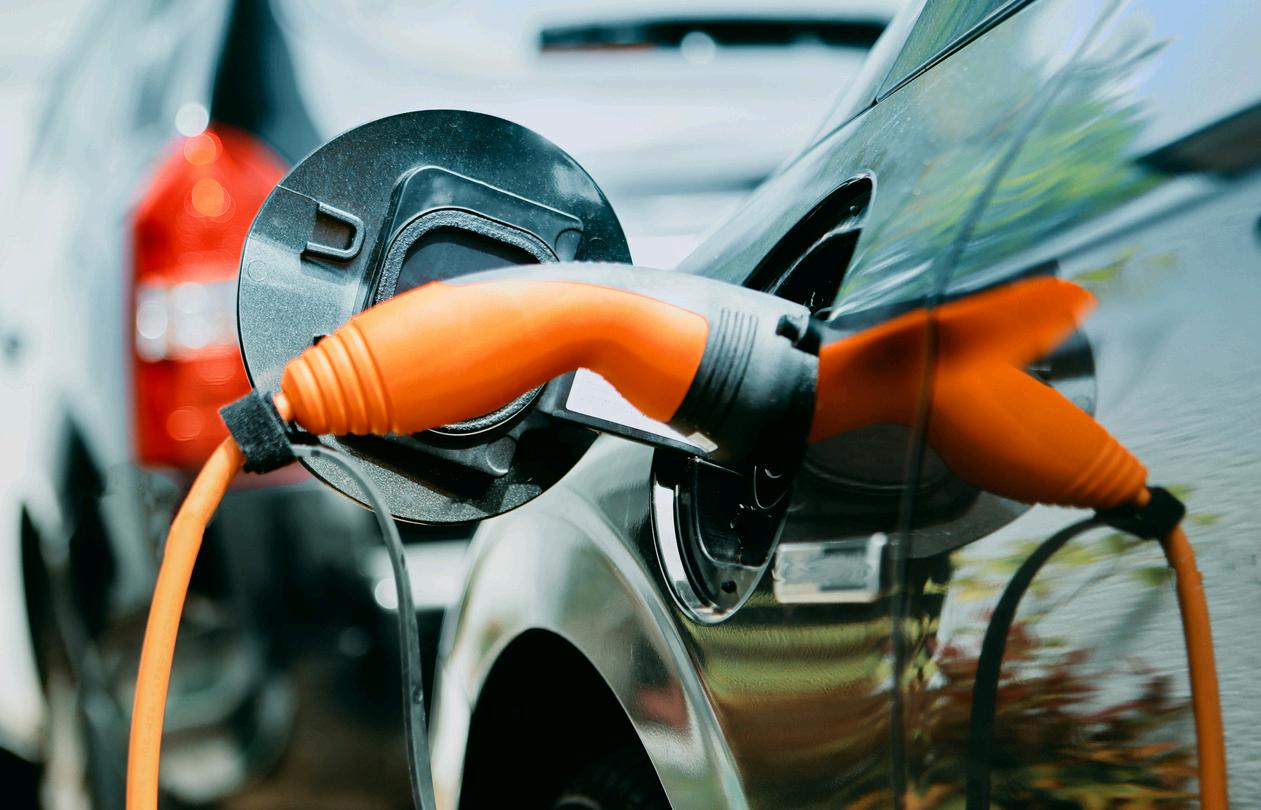
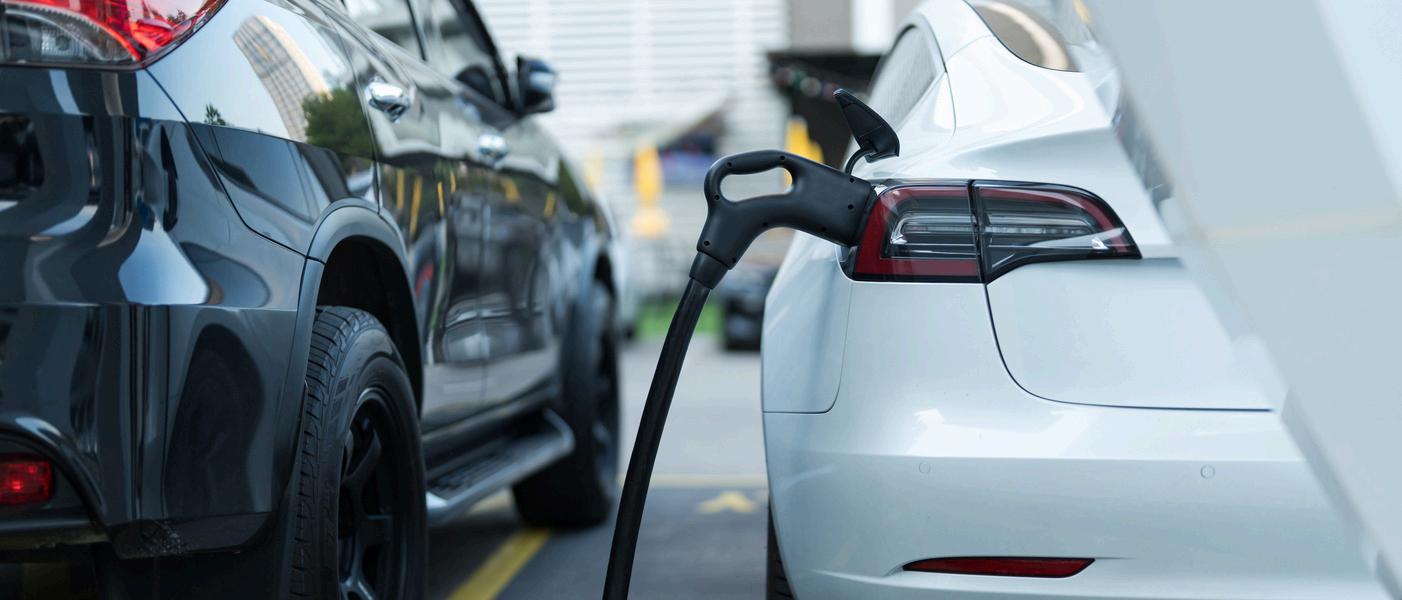


"INDIA'S


